Special Delivery: Dragan Bender has tools to be NBA's next Croatian star
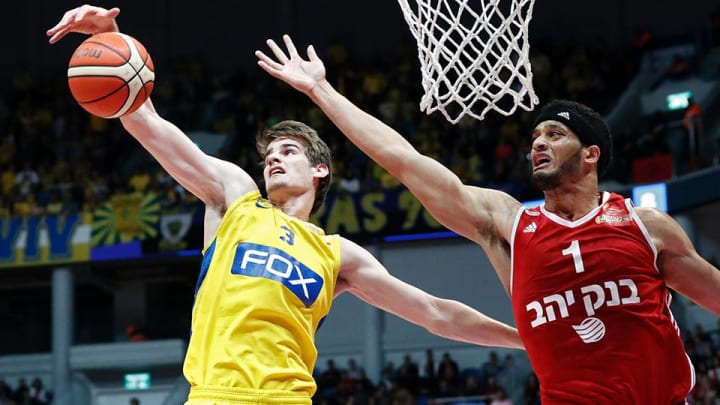
Your teams. Your favorite writers. Wherever you want them. Personalize SI with our new App. Install on iOS or Android.
On May 17, the evening the NBA draft lottery is held in New York City, two giant brothers are at Tel Aviv's Ben Gurion Airport, waiting for two parents and two suitcases to come off a flight from Zagreb, Croatia. The brothers have obtained special permission to pass through security in order to help their parents, who speak neither Hebrew nor English, navigate the airport. But the brothers are also deeply interested in taking possession of the aforementioned suitcases. "It's like we're waiting," the older one says, "for some money or some treasure."
The younger brother is Dragan Bender, an 18-year-old, 7'1" stretch power forward playing for Maccabi Tel Aviv and the top European prospect in the June 23 draft. The older brother is Ivan Bender, a 20-year-old, 6'9" forward on summer break after his redshirt freshman season at Maryland. The suitcases are normal in appearance, black and green, but they hold cargo that isn't exactly common in Israel: a not insignificant quantity of tasty pork products, vacuum-sealed in clear plastic. Bacon, ham and pršut, the Dalmatian coast's version of prosciutto, all from the Benders' home-and-backyard meat-curing operation in Čapljina, a town of 28,000 in Bosnia and Herzegovina, just across the Croatian border.
"Natural weight-gainer," is what Dragan calls the pork. In his quest to add bulk to his 225-pound frame, this is preferable to the super-sized bag of Serious Mass powder on the kitchen counter of his two-bedroom Tel Aviv apartment. Upon arriving there from the airport, the brothers fill Dragan's fridge with meat. Their father, Rafo, works for Croatian Railways as an engineer, and their mother, Bernada is retired; their chief family traditions are growing their own vegetables, baking their own bread, curing their own meat and, as Dragan puts it, "respecting the meaning of those things." This pocket of family time, one month before the draft, before Dragan and some NBA team split a $1.3 million buyout of his Maccabi contract to bring him Stateside, is keeping Čapljina on the Bender boys' minds.
• 2016 NBA Big Board: Where does Dragan Bender rank in top 60 prospects?
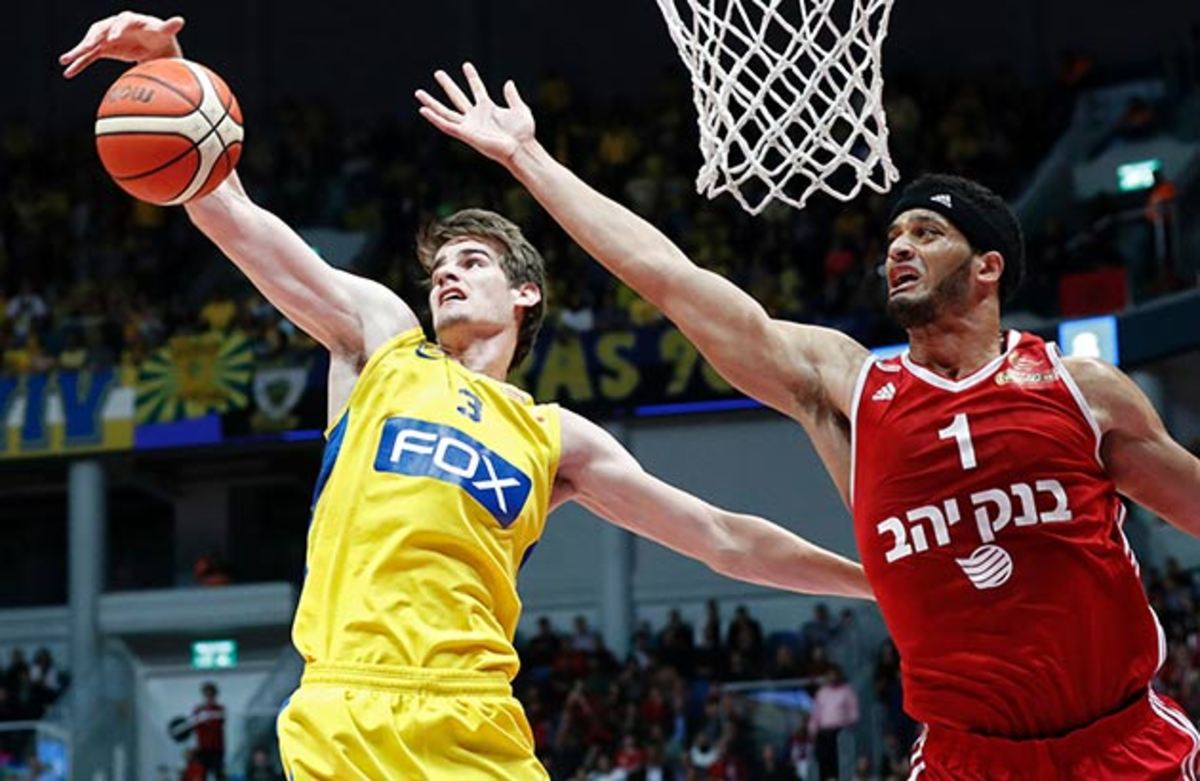
Two days later, Dragan drives his white Nissan Qashqai with the LEASE4U door decal home after a workout at Maccabi's arena. The Tel Aviv skyline unfurls to his left—Miami-style condo towers, old-world concrete low rises, the gaps in the buildings providing split-second reveals of the Mediterranean Sea's noontime shimmer—and Ivan is in the passenger seat, explaining a pork-curing process that has been passed down through generations.
It begins in late November when the weather turns cool enough. The Benders make a trip to the local pig farm, where Rafo and his brother pick out two or three hogs. "In my opinion the best pig is which one is heavier, around 200 or 250 pounds," Ivan says, in the English he's refining at Maryland. "You'll get better bacon from that." The pigs are killed and bled out at the farm, then taken to the Benders' basement for butchering.
Dragan and Ivan were last present for this when they were 11 and 13—the year before they were discovered as prospects and left home for Split to begin training at the basketball academy of Croatian star Nikola Vujčić. They would be enlisted to help fill hams. "We [would] challenge each other," Ivan says, "like who is gonna make the best one without cutting off or breaking a piece." They would later sea-salt the cuts of meat; dry it in the northeasterly wind called the bura, and cold-smoke it in the smokehouse in their backyard.
The true delicacy requires the most patience. "The best pršut is over one year," Ivan explains, "and when someone says, 'Do you want to try our pršut that's two years old?' you know that it is [ready] to be tasted."
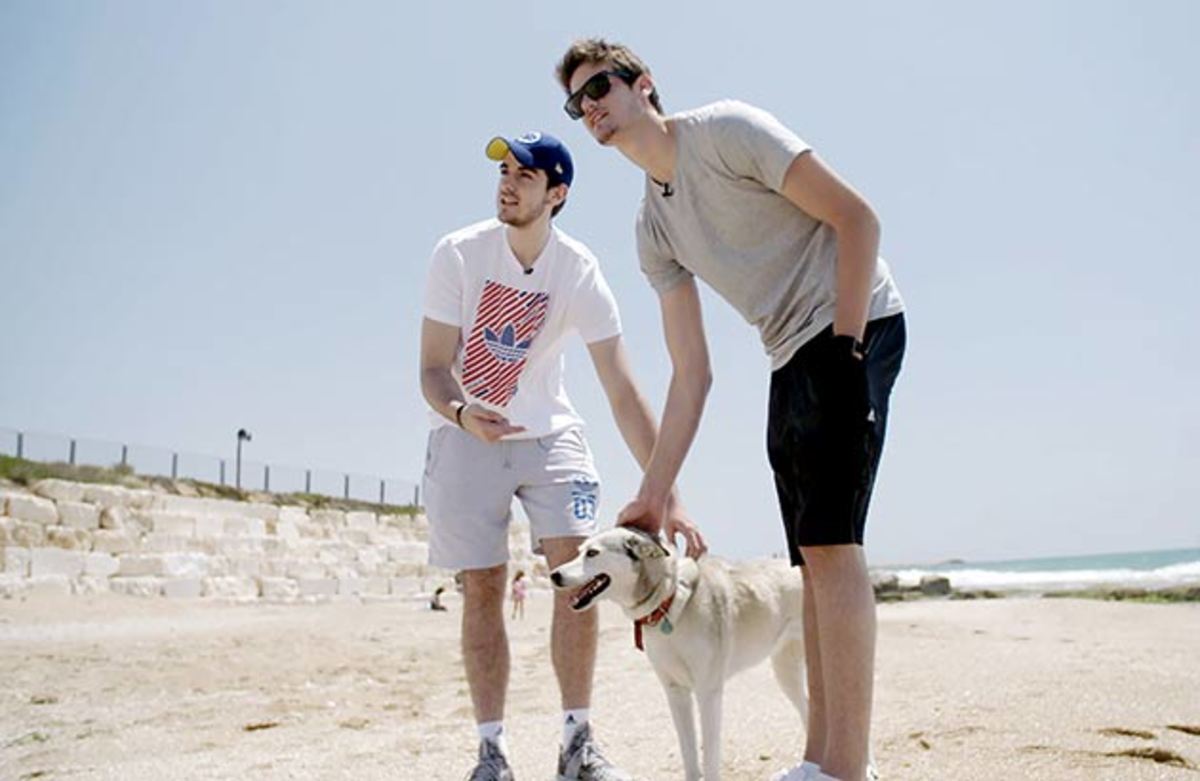
*****
In the bizarro meat market that is the NBA draft, teams are unwilling to wait for pršut that has sufficiently aged; instead, they speculate on fresh cuts—and Dragan, at 18 years and seven months, is the youngest of the projected lottery picks. A workout like the one two days after the lottery, with Dragan and Ivan training at Maccabi's Menora Mivtachim Arena with Mladen Sestan, the 57-year-old Croatian skills guru who discovered them, and has followed Dragan to Israel, is a vital stop on the draft-reporting circuit because game-scouting opportunities have been so limited.
Bender averaged just 12.9 minutes for Maccabi this season (and 10.5 minutes in Euroleague play), making just three starts. He also missed last summer's FIBA U19 World Championships due to a regrettable stalemate between his shoe sponsor, Adidas, and the sponsor of the Croatian national program, Jordan Brand, which refused to let him play in non-Jordan footwear.
• 2016 NBA draft position rankings: Top guards, wings and big men
The understandable predraft question hanging over Bender, then, is how someone who can't crack a starting lineup of an Israeli Super League team, and who hasn't appeared in a major international competition since 2014, can be a serious candidate for a top six selection in the NBA draft. The answer begins with what's evident on the court: Bender is 7'1" with a 7'2" wingspan and can gracefully move on the perimeter as a pick-and-pop guy, a ballhandler and a sliding defender; he has a competent (but not deadeye) three-point shot; and he has an advanced feel around the basket, despite lacking the bulk to do damage in the NBA paint. While not a spectacular athlete, he is a smooth one, and he has the potential to be the kind of New Age big man that the league currently covets. There is no other 7-footer like him in this draft.
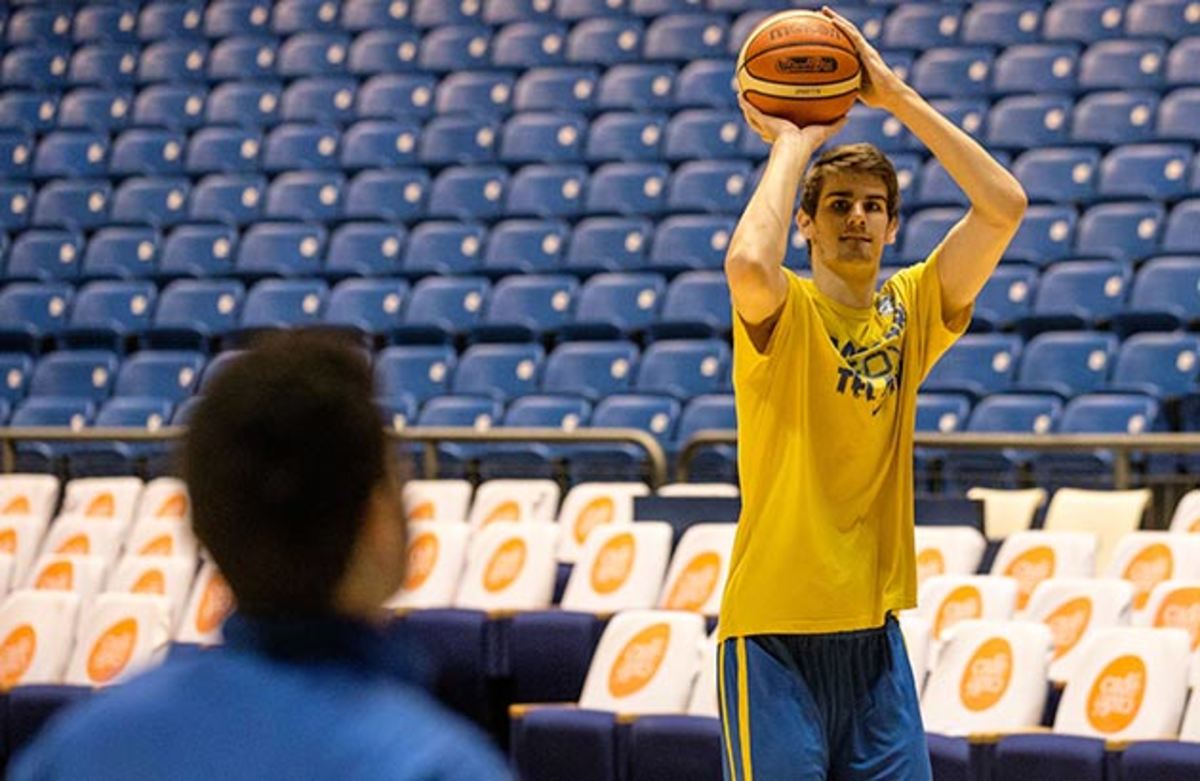
Furthermore: Those who were present for Bender's breakout in the summer of 2014 in the remote location of Konya, Turkey—I was the lone member there from the U.S. media—saw him in a role that suggested he was Europe's most interesting young playmaking giant. Bender was 6'11" then, a 16-year-old playing for Croatia against opponents one or two years older in the U18 Europe A-Division championships. He grabbed rebounds and threw long, baseball-style outlet passes that dropped into the hands of streaking guards. He handled the ball against full-court pressure and in pick-and-roll situations; he passed to cutters from the high post; he had impressive shot-blocking instincts that compensated (somewhat) for his lack of bulk. He was one rebound short of a triple double against Greece and one assist shy against Latvia. He had 34 points and 14 boards against a Lithuania team with 6'10" Domantas Sabonis, a potential top 20 pick in this draft out of Gonzaga, and afterward Bender carried Croatia's water bottles to its bus, because that was his duty as its youngest player.
If you believe Bender is still capable of that stuff, that it's just been muted in a sub-optimal situation—on a struggling, grown-man-stocked Euroleague team that was under so much pressure to win that its coach couldn't allocate minutes to a kid, much less experiment with him as a playmaker—then you have faith that it can resurface in the right situation in the NBA. This is a conviction shared by Vujčić, who starred for Maccabi in the 2000s, founded his Croatian academy in '05, and then returned to Maccabi as a front-office employee in '13, bringing Bender with him by signing the kid to a seven-year contract.
"[There are] two types of Dragan," Vujčić says. "One that is before he came to Maccabi, and then one at Maccabi.... Maccabi is not an easy environment for somebody like a kid. Because here only what [matters] is the result. We want to win tomorrow's game, not what will be in three months, especially not what could be in the future.... So I believe Dragan will [eventually] get the freedom and people will not limit him to do his stuff. He's going to be unbelievable. Because even now you see some practices, and workouts, [that] this is the deal."
The brothers' workout at Menora Mivtachim Arena has three nonjournalistic spectators: Vujčić; Bender's father; and Maurizio Balducci, Bender's Italian agent. Balducci is wearing a Lakers T-shirt, and though Los Angeles has the No. 2 pick, he says not to read into it: "I cover myself in glue, jump into the wardrobe and see whatever sticks."
Sestan is having the Benders post up against each other, receive entry passes and execute baby hooks. "If you are not asking for the ball, I will hit you in the head with it," Sestan says in Croatian. "But if you ask, I will be patient."
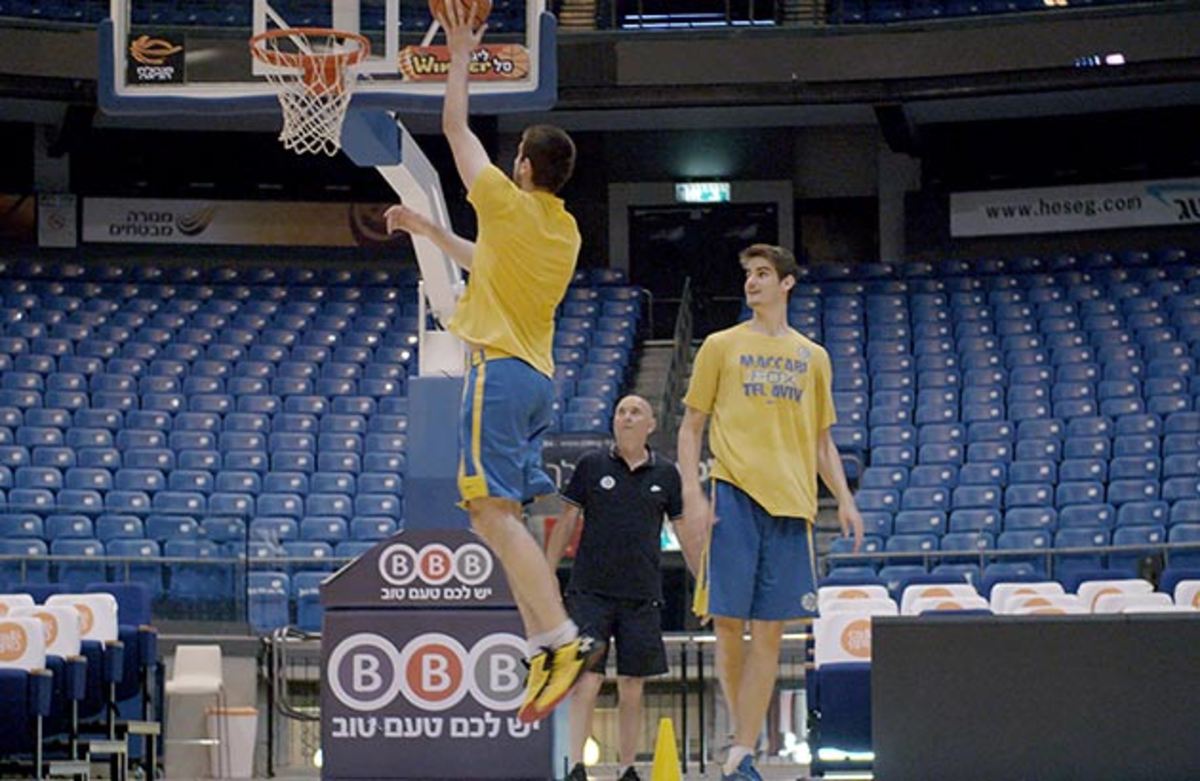
The plan, pending the approval of whoever drafts Dragan, is to have Sestan move with him to the U.S., live nearby and act as his skills coach, making what he calls "small corrections" after practices and games. He supervised a complete overhaul of Bender's shot in Tel Aviv, and Bender made 36% of his three-pointers this season, up from 26.9% last year with Ramat Gan in the Israeli second division. As the brothers do shooting drills here, Rafo takes photos of his sons on his Android phone, smiling: It is the first time they've trained together since 2013, the year Ivan suffered the first of two ACL injuries that stalled his own promising career just as his younger brother began to flourish.
Dragan's threes start to go in from the corner, and Balducci makes PING! noises as they fall. "The flamingo is flying," he says, happily. When the brothers collectively go cold for a stretch, Vujčić heckles them good-naturedly in Croatian. "Every time they laugh at us," Sestan shouts to the boys, "it makes us stronger!"
A group of Americans enters the gym. They've traveled from Philadelphia, and they take seats on the opposite baseline. "This court is the holiest place in Israel other than the wall in Jerusalem," one of them says to the group. A cohort introduces him as "a scout for the Sixers," and then, as an explanation for why they both give off more of a rabbinical vibe, adds, "He's undercover right now."
A few of the children in their group begin yelling over to Dragan, "Bender! Bender! Go to the Sixers!" The men acknowledge that they are, in fact, rabbis, on a trip with students from Abrams Hebrew Academy in Yardley, Pa. One of the rabbis, Ira Budow, a big Maccabi fan, is asked if he would advise the 76ers to draft Bender. "Nah," he says. "I've seen him play this year. Bender's good ... but he's not that good."
• Gallery: NBA Mock Draft: Projecting first 30 picks of 2016 draft
2016 NBA Mock Draft
1. Philadelphia 76ers: Ben Simmons, F, LSU (6'10", 240)
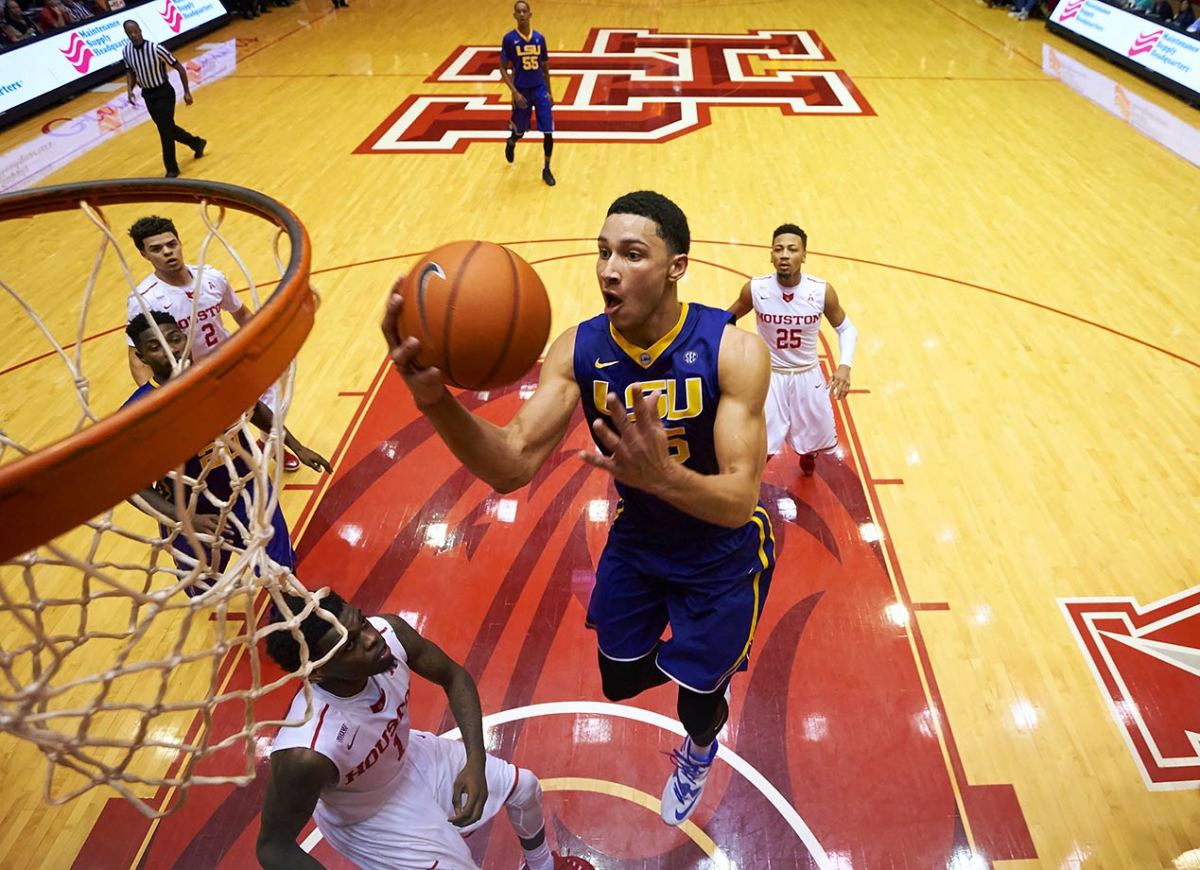
Number one could've been a much closer debate this year, but Simmons has had the clear edge ever since the Sixers won the lottery. Brett Brown knows his family from his days in Australia, Simmons trusts The Process, and this is already done. There are real questions about his work ethic at LSU and how he'll fit in the NBA, but he's got the highest upside on the board. He's 6'10 with point guard skills, and if he can develop a dependable jumpshot and improve on defense, he could be somewhere between LeBron James and Draymond Green—the two best players on the floor of an NBA Finals Game 7 a few days ago. For the Sixers, that kind of upside is worth the risk.
2. Los Angeles Lakers: Brandon Ingram, F, Duke (6'9", 195)
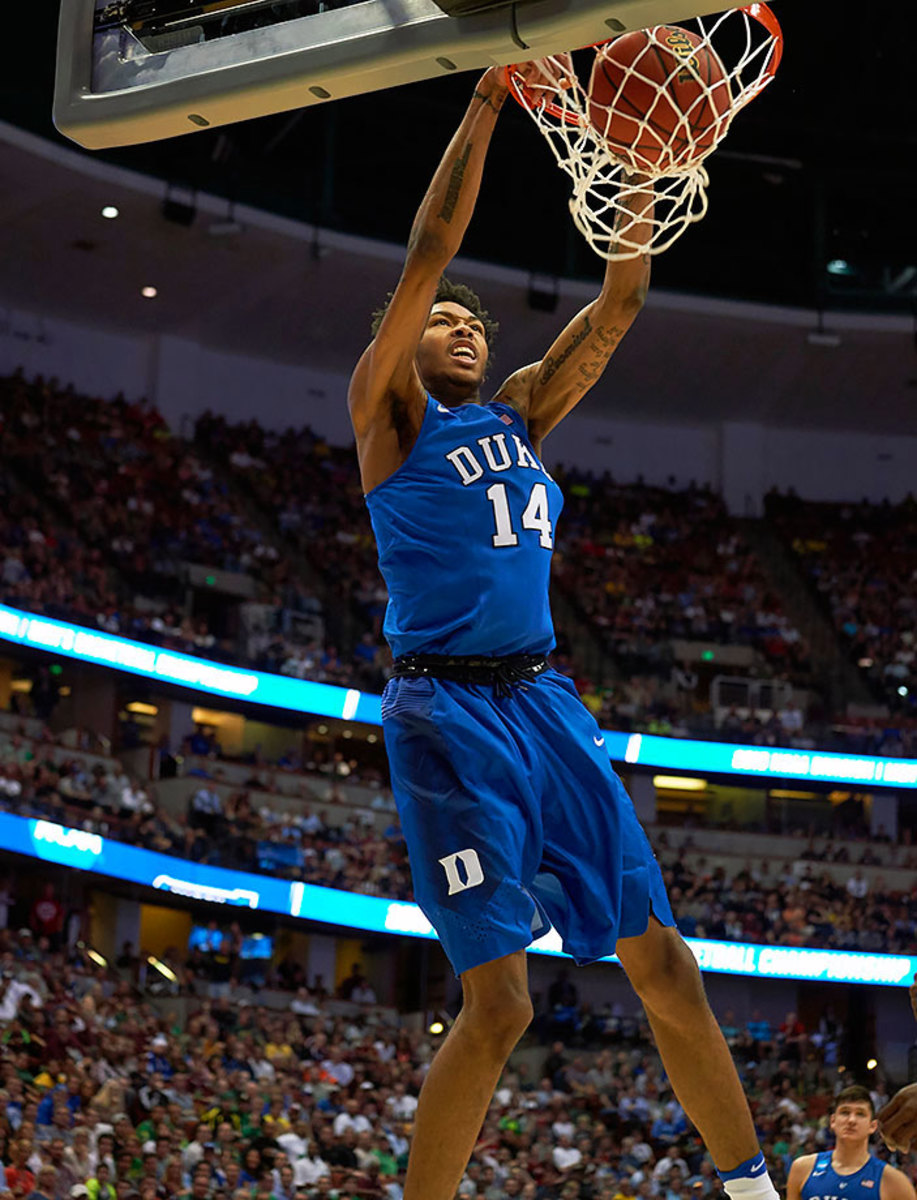
Ingram's my favorite player in the draft. He looks like he weighs 150 pounds, but he plays bigger, and he was fearless for Duke last year. All the typical draft buzzwords apply to his place in the top two—he's got a freakish wingspan (7'3), three-point range, the ability to play multiple positions and tons of upside—but I like Ingram for his intangibles as much as anything. He played his tail off against bigger players all year long, he got better as the season unfolded, and by the end he was clearly the best player on Duke's team at 18 years old. The Lakers are apparently settled on Ingram, and L.A. fans should be thrilled.
3. Boston Celtics: Jaylen Brown, G/F, Cal (6'7", 225)

The hype comes full circle! After half the NBA decided Brown was overrated over the past few months, he's now right back in the mix near the top of this draft, and he could surprise everyone Thursday. Boston has liked Brown since the regular season, and if the Celtics keep this pick, here's to betting that Ainge goes for upside on the wing. This is the same GM who was ready to trade four first–round picks for Justise Winslow last year, and Brown does a lot of the same things. With a reliable jumper, he could turn into a terror on both ends of the floor. Or, to think of this a different way: If the Celtics can't trade for Jimmy Butler, maybe they can draft him.
4. Phoenix Suns: Marquese Chriss, F, Washington (6'9", 225)
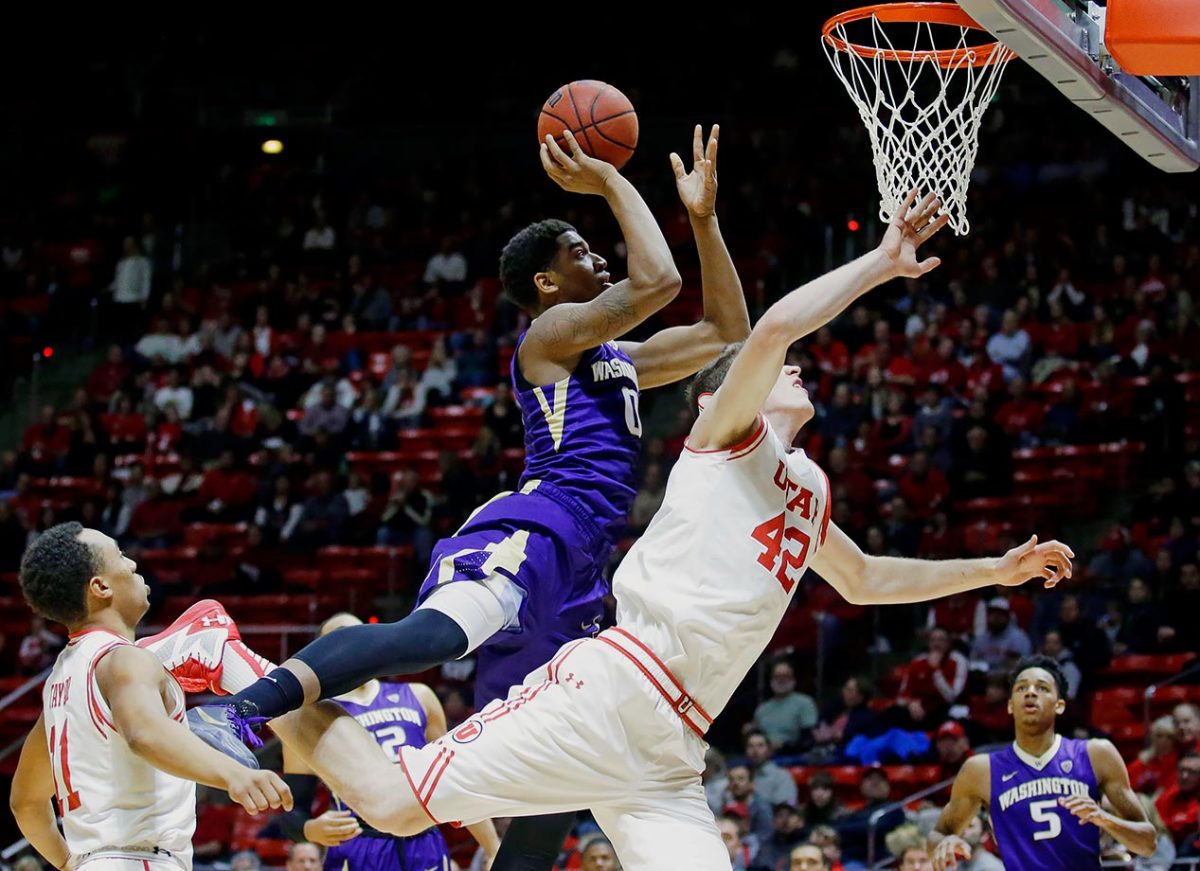
Speaking of hype... Chriss came out of nowhere—he's only played basketball for five years, he wasn't ranked in the top 50 out of high school and he only played about 25 minutes per game for Washington (thanks in large part to foul trouble)—but over the past month he's exploded up draft boards. He's got the highest ceiling of anyone beyond the top two. That's partly an indictment of his lottery peers, yes, and he's also got a much lower floor than someone like Jaylen Brown, sure. But all of that is what makes this fun. Will Marquese Chriss turn into a full-on pick-and-roll nightmare next to Devin Booker, or will he be 2016's Tyrus Thomas? Let's find out!
5. Minnesota Timberwolves: Kris Dunn, G, Providence (6'4", 220)
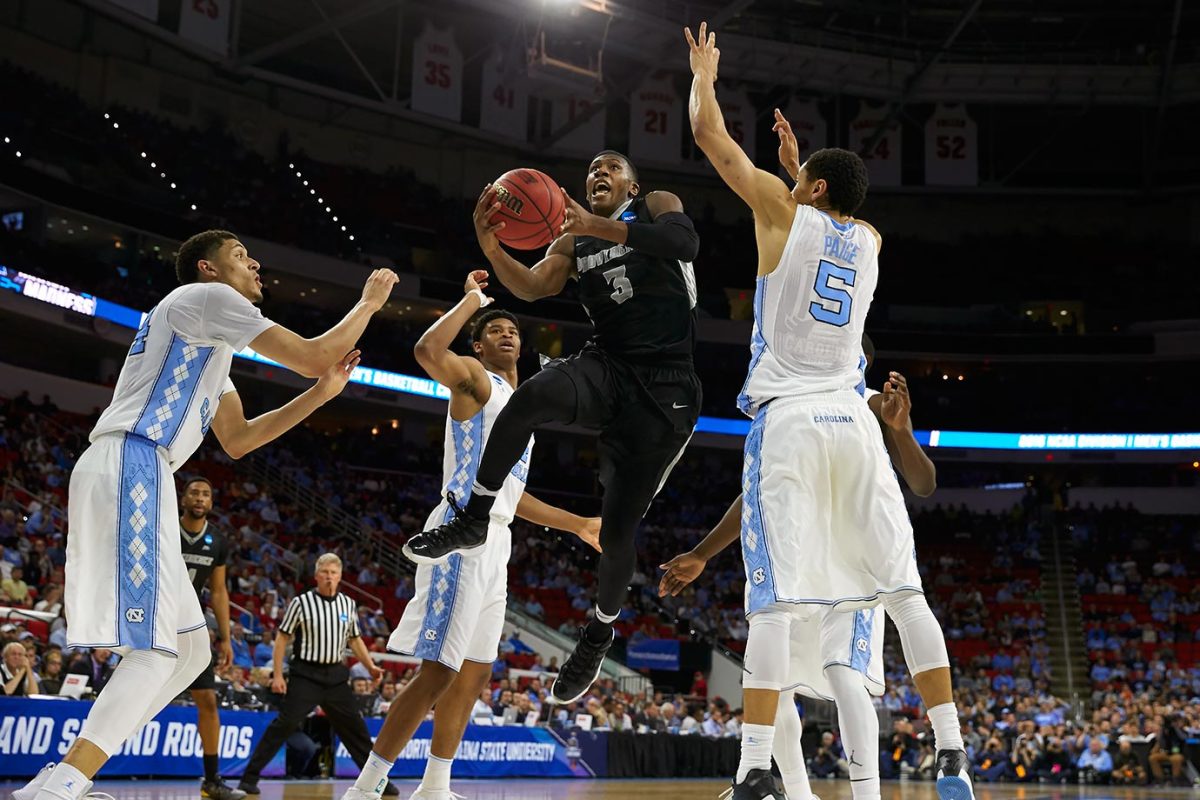
Minnesota could really use Dragan Bender in this spot, and a future built around him and Karl–Anthony Towns would be terrifying. On the other hand, Kris Dunn may be the safest bet in the draft outside of Brandon Ingram, and between injuries and Ricky Rubio rumors, the Wolves point guard situation isn't quite as solid as you might think. Dunn was one of the most productive players in the country at Providence, and he's the closest of any lottery pick to helping a team from Day One next year. He's built like a tank and plays like it—there's no way Thibs will be able pass on that, right?
6. New Orleans Pelicans: Jamal Murray, G, Kentucky (6'4", 205)
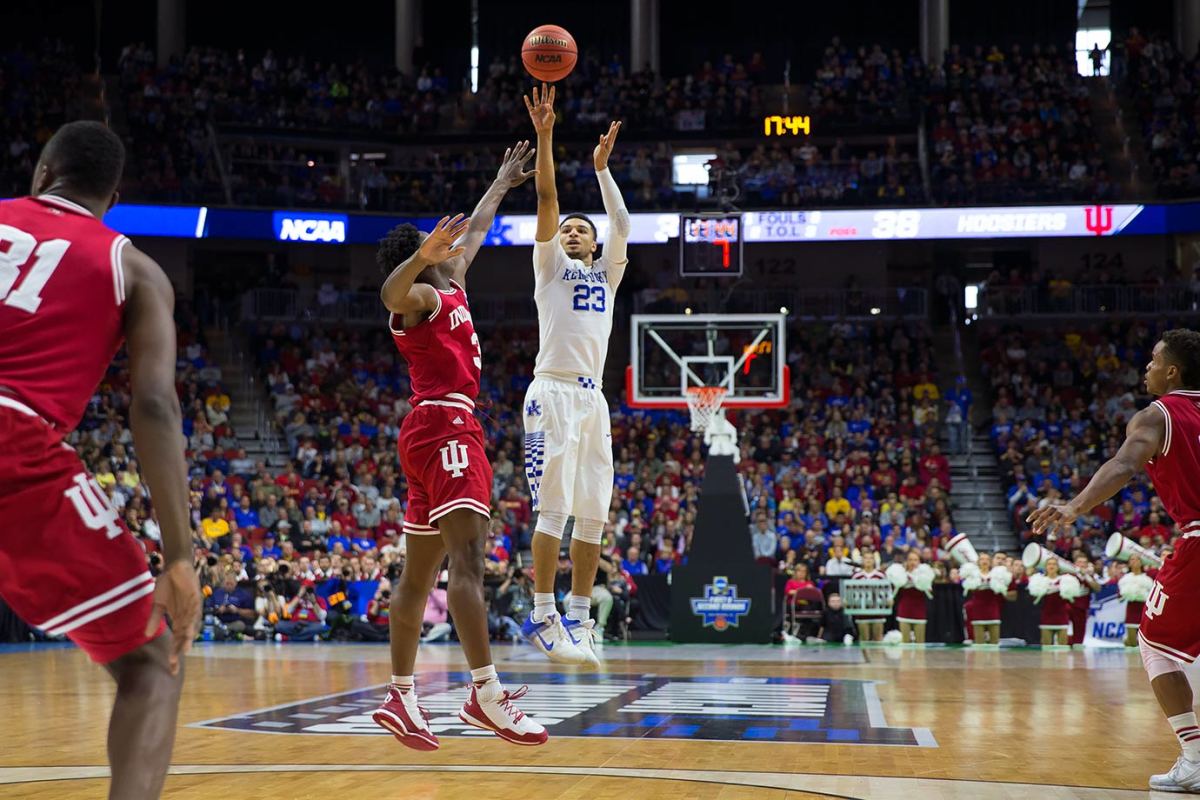
Anyone who watched him in the NCAA tournament against Indiana saw him struggle against NBA length and quickness, and his lack of athleticism will make playing defense a struggle. But look at some of the best combo-guards in the NBA—Curry, Harden, McCollum, even Devin Booker and D'Angelo Russell last year—and there are plenty of examples of talented guards who faced a lot of the same skepticism at draft time. The Pelicans should grab him hoping that he can get to that C.J. McCollum level next in a few years, and knowing that his three-point shooting could help them regardless next season.
7. Denver Nuggets: Dragan Bender, F, Croatia (7'0", 220)
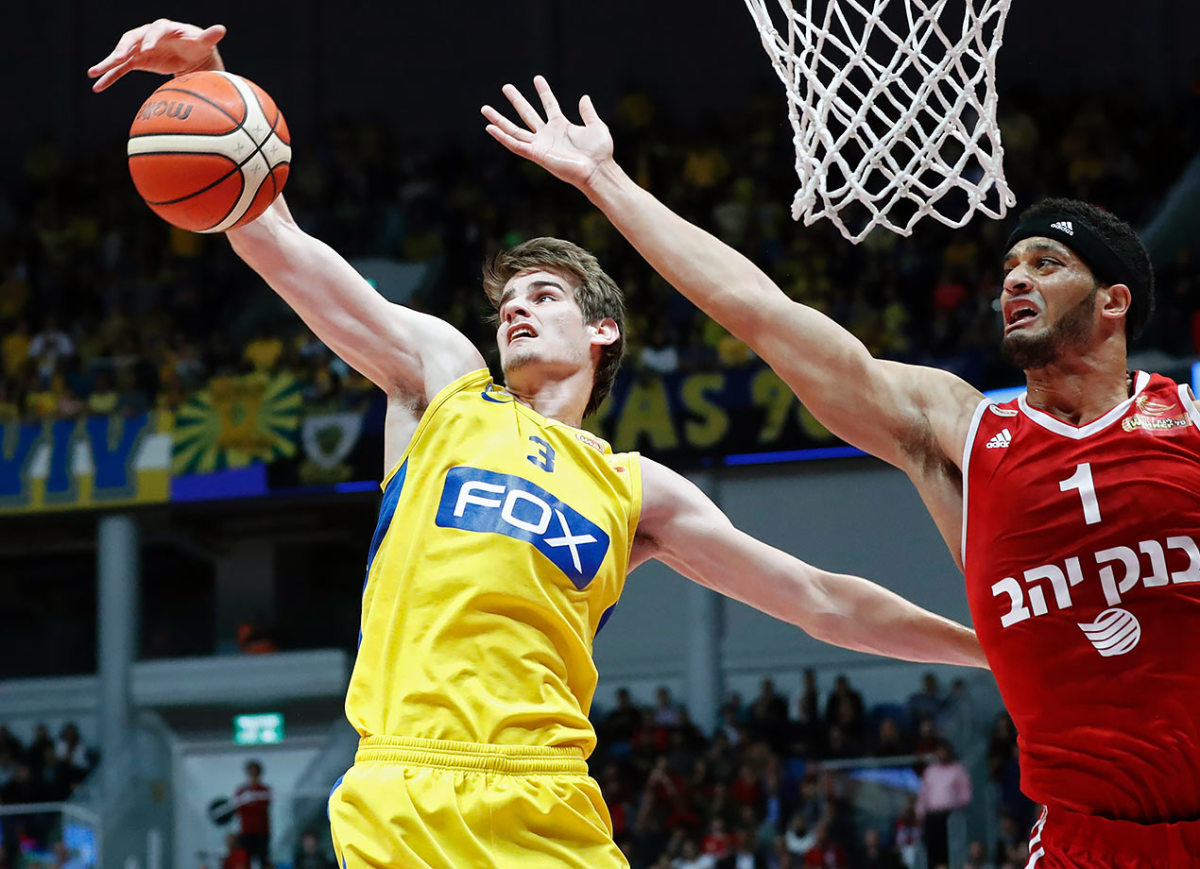
Bender's size and ability to space the floor will make him valuable wherever he lands, but as the youngest player in the draft, it'll take him a few years before he's ready to contribute. Even then, he may not score enough to be a true superstar. All of this is why he could slide tonight. But he could also turn into a skilled glue guy who can pass, shoot, and guard multiple positions on defense. For a Nuggets team that already has Nikola Jokic and Jusuf Nurkic at the five, adding Bender as a stretch–four would be a major win for the long-term blueprint.
8. Sacramento Kings: Buddy Hield, G, Oklahoma (6'4", 215)
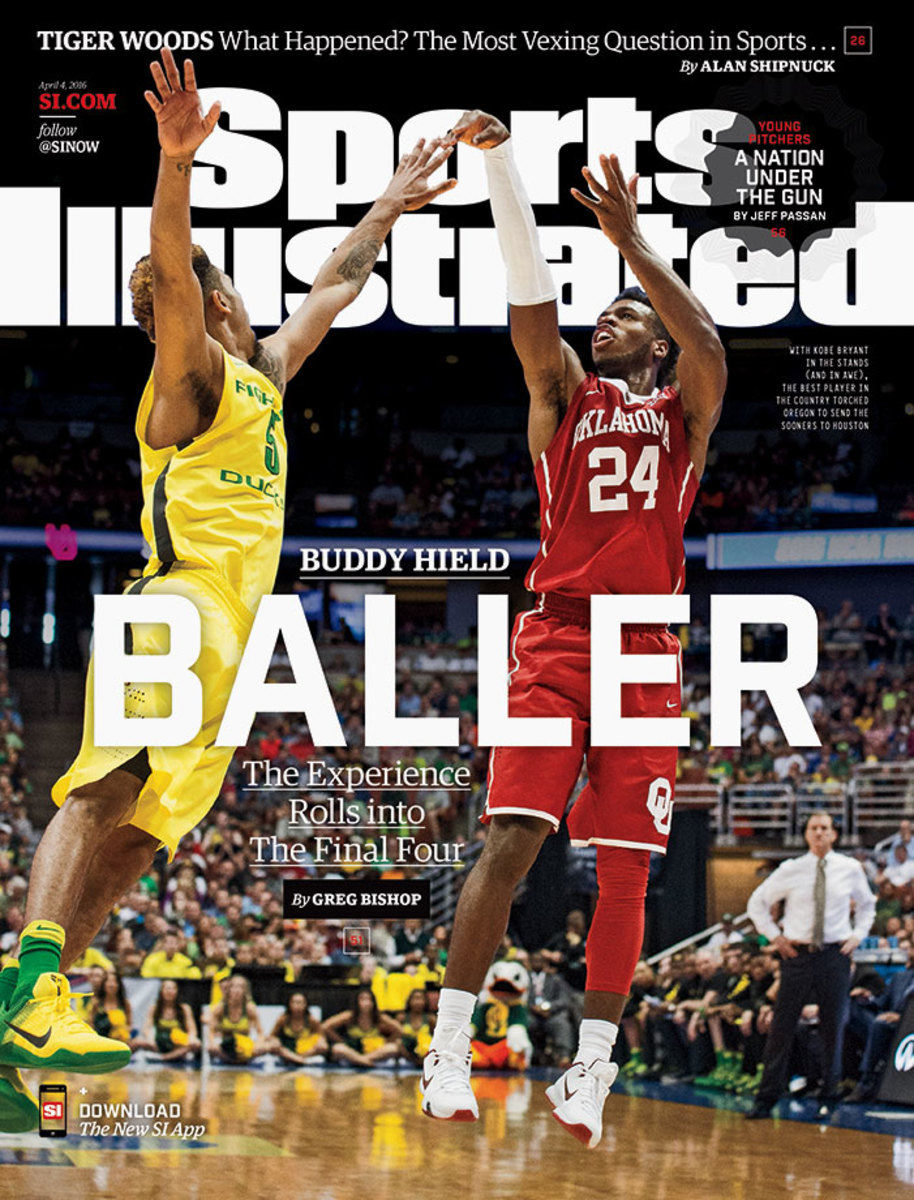
According to ESPN's Chad Ford, the Kings have been shunned by almost every prospect in the first round. Players have refused to work out, and many have refused to even provide medical records. Apparently nobody wants to be the next Nik Stauskas? In any case, Sacramento is opening a new arena this season, Boogie is in the final two years of his contract and still hasn't made the playoffs, and the Ben McLemore Experiment has been on life support for a good 24 months now. Hield's best case scenario is the Bahamian J.J. Redick, which would be great in this draft. Even in the worst–case scenario—Jodie Meeks?—his shooting should help off the bench.
9. Toronto Raptors: Jakob Poeltl, C, Utah (7'1", 240)
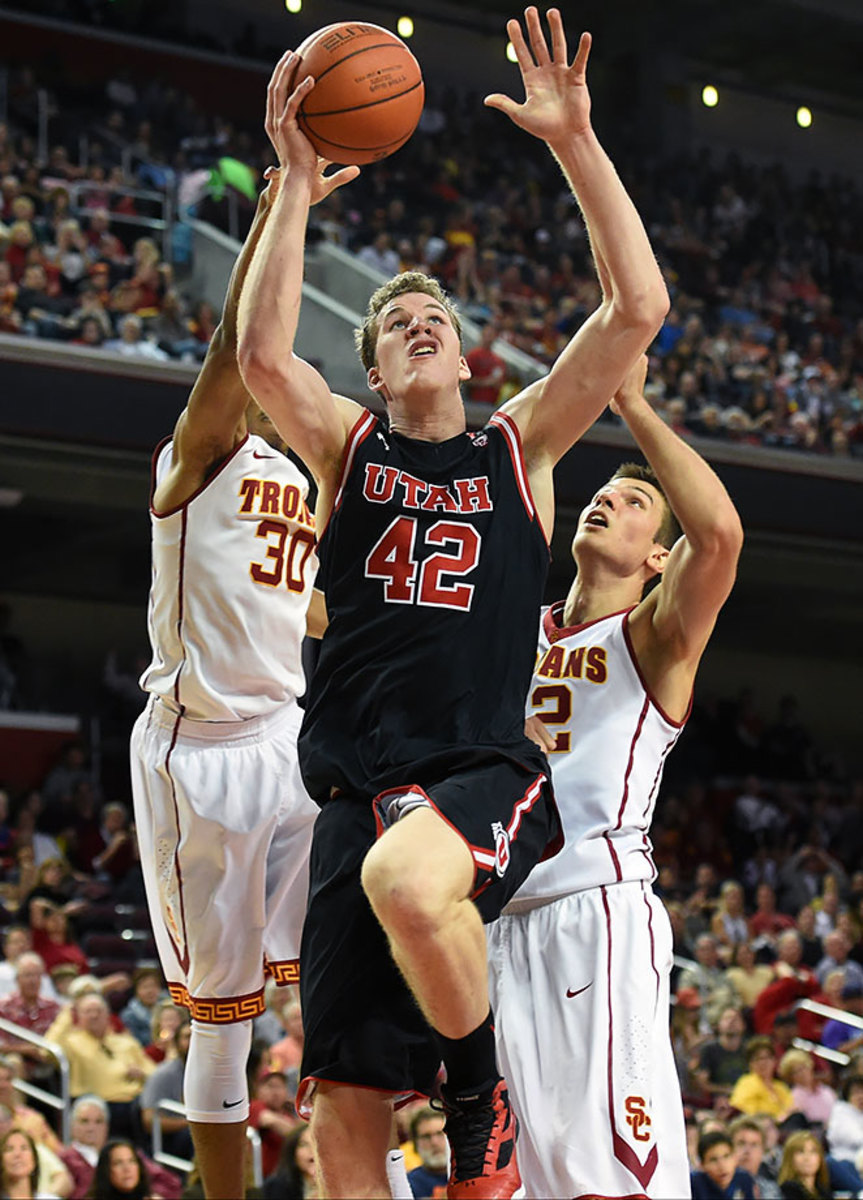
Poeltl has been a favorite of mine for a while—possibly because it's so much fun to pronounce his first name (YA-KUB). After two years in the draft the spotlight has hurt some his of buzz, but he should be a pleasant surprise for whichever team lands him. His size alone will make him a factor against most modern big men, and he's skilled around the rim. He's smart and he's mobile, and if his shot blocking isn't elite, his team defense should be excellent. If the Raptors think they'll lose Bismack Biyombo, Poeltl's a good replacement, and probably the best player available here.
10. Milwaukee Bucks: Deyonta Davis, F/C, Michigan State (6'10", 240)
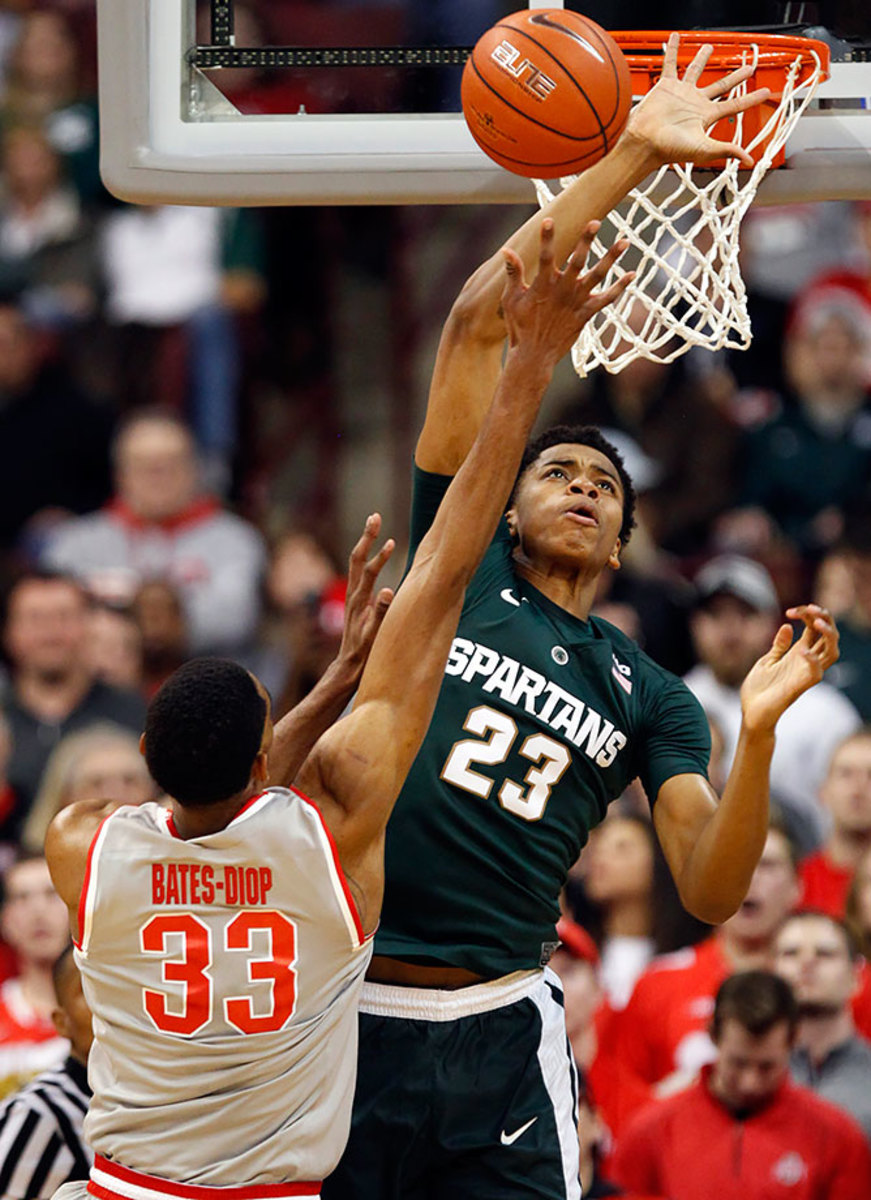
The Bucks could go in a couple different directions—Wade Baldwin, Timothe Luwawu, and Henry Ellenson are all options—but after talking it through on this Bucks podcast with friends at Brew Hoop, I'm pretty sure drafting Davis is the best option. He's raw and probably a few years away from helping as a starter, but this would be a smart long-term play. He can protect the rim, rebound, and best–case scenario, he can knock down jumpers and spread the floor. Davis can definitely do the first two, and maybe even the third. Do it, Bucks Mafia.
11. Orlando Magic: Skal Labissiere, F/C, Kentucky (6'11", 220)
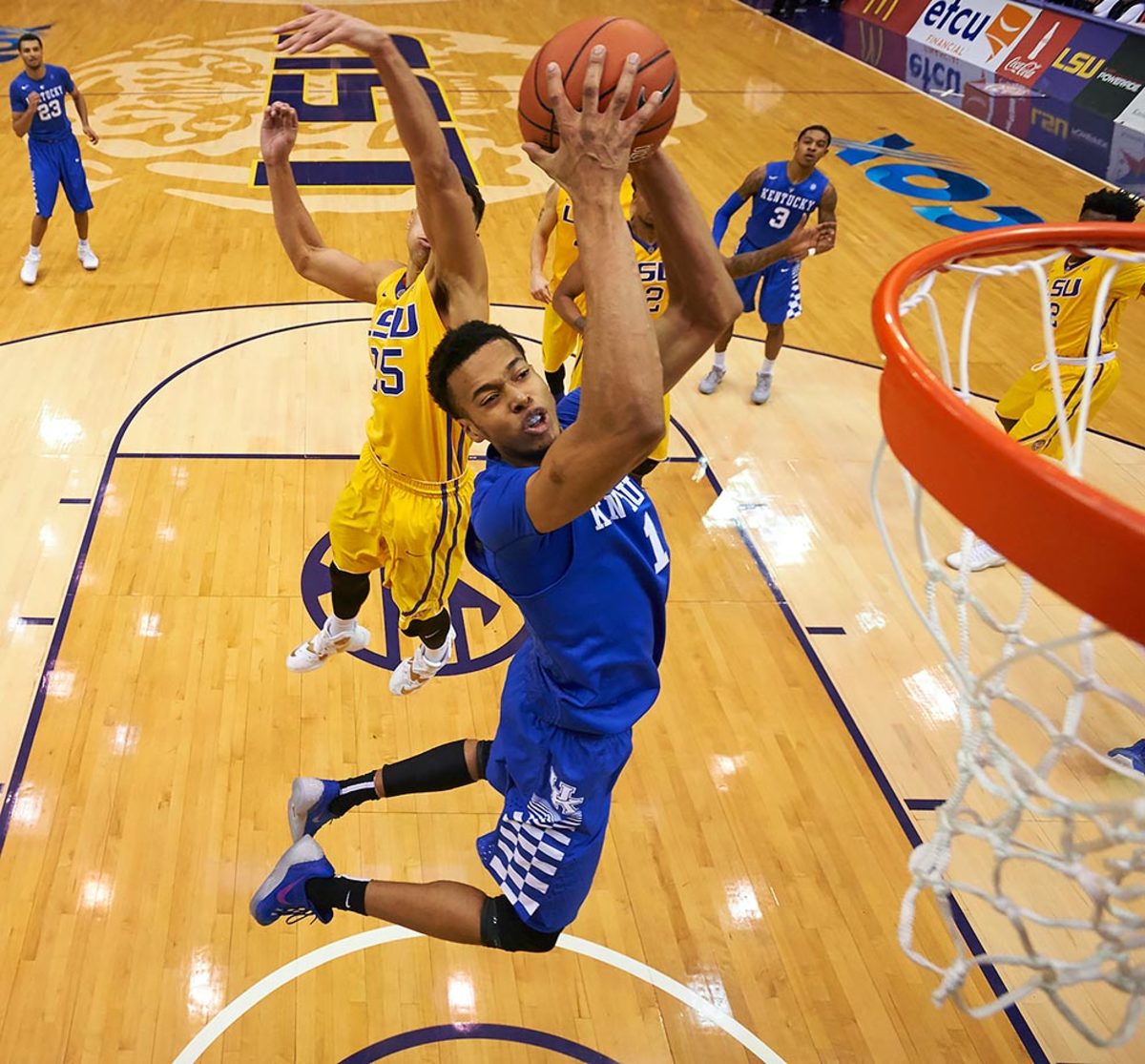
General question: Does anyone know what the Magic are doing? The pieces in Orlando don't necessarily fit, but they've got so many young players from the past few years that there aren't any obvious holes to fill, either. For now, let's assume they go for upside here. Skal is a few years and a few thousand Chipotle burritos away from banging with NBA big men, but if he can put on enough weight to hold his own, he's got all the tools to be an excellent rim-protecting stretch five (think Channing Frye).
12. Atlanta Hawks: Domantas Sabonis, F, Gonzaga (6'10", 240)
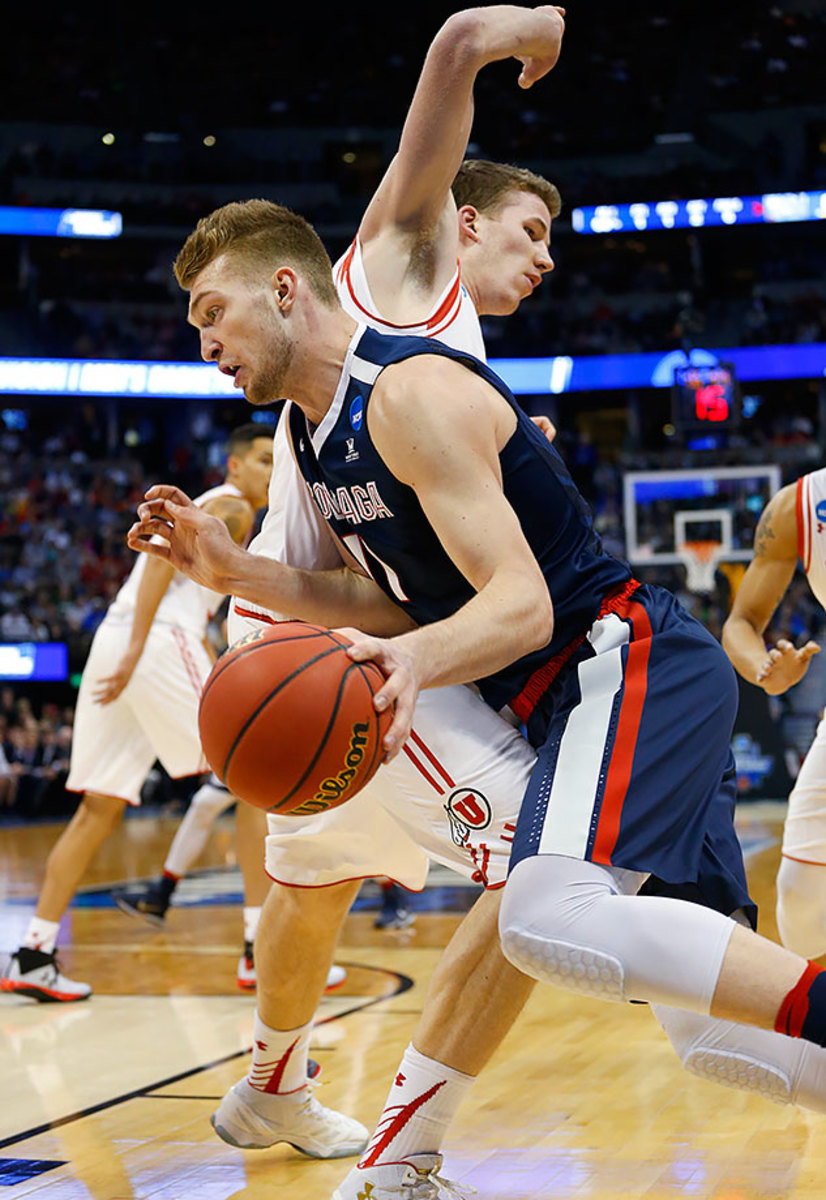
Let's see... Undersized, underrated, high motor, high IQ, star of everyone's favorite Cinderella team... He's basically already a Hawk, right? And this is definitely the best–case scenario for Domantas Sabonis. He's good and productive now, but if the Hawks can help him add a perimeter jumper, he could be excellent for the next 10 years.
13. Phoenix Suns: Timothe Luwawu, G/F, France (6'7", 205)
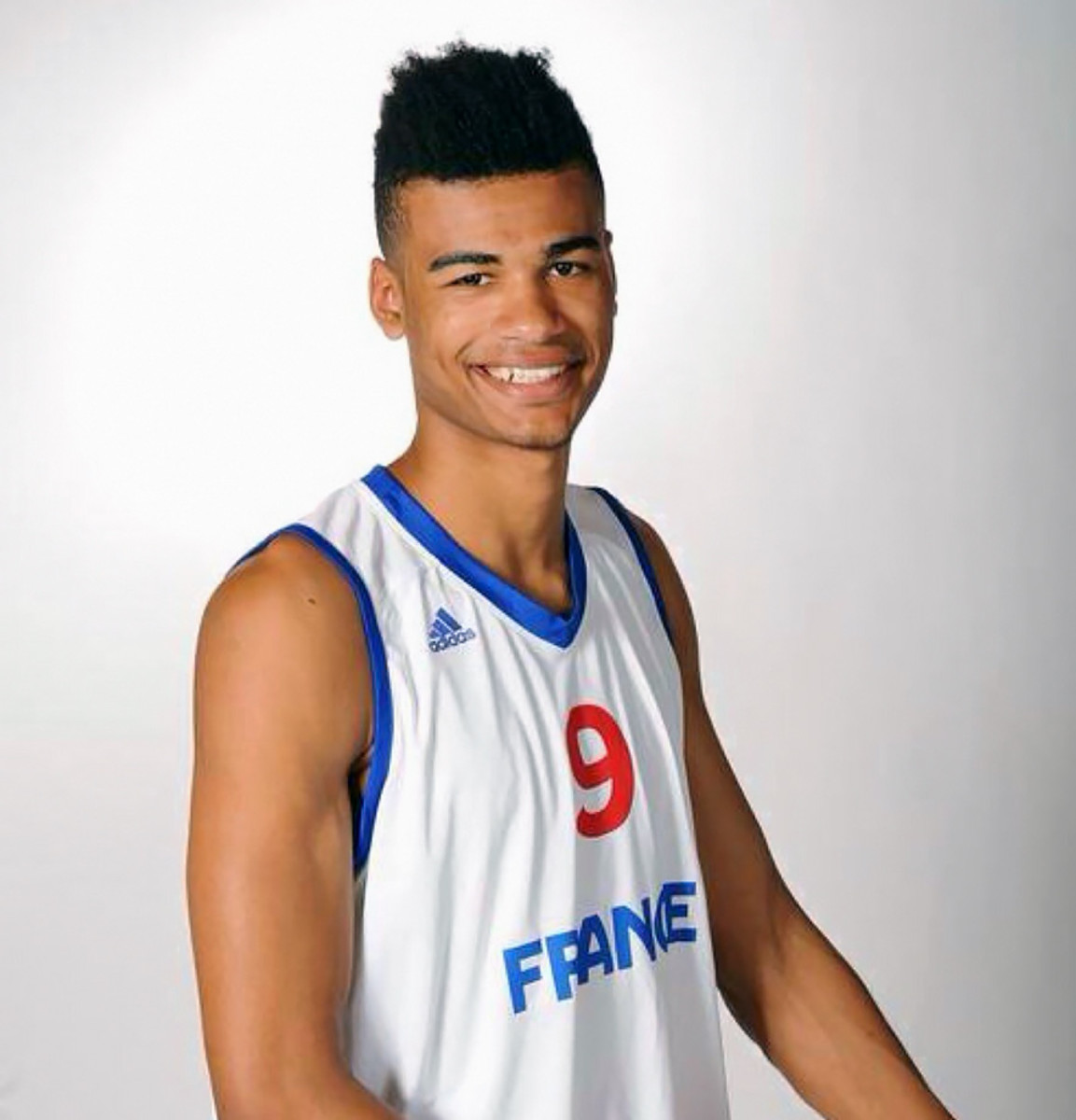
Luwawu's highlights a) lead this draft class in dunks-per-minute and b) make me want a Mega Leks jersey. At worst, he can be a helpful energy role player off the bench. At best, he can hone his three-point shooting and grow into a long (6'11 wingspan), athletic monster on the wing playing next to Devin Booker in Phoenix. The Suns could also take Henry Ellenson here, but I hope they roll the dice on Luwawu.
14. Chicago Bulls: Wade Baldwin IV, G, Vanderbilt (6'3", 195)
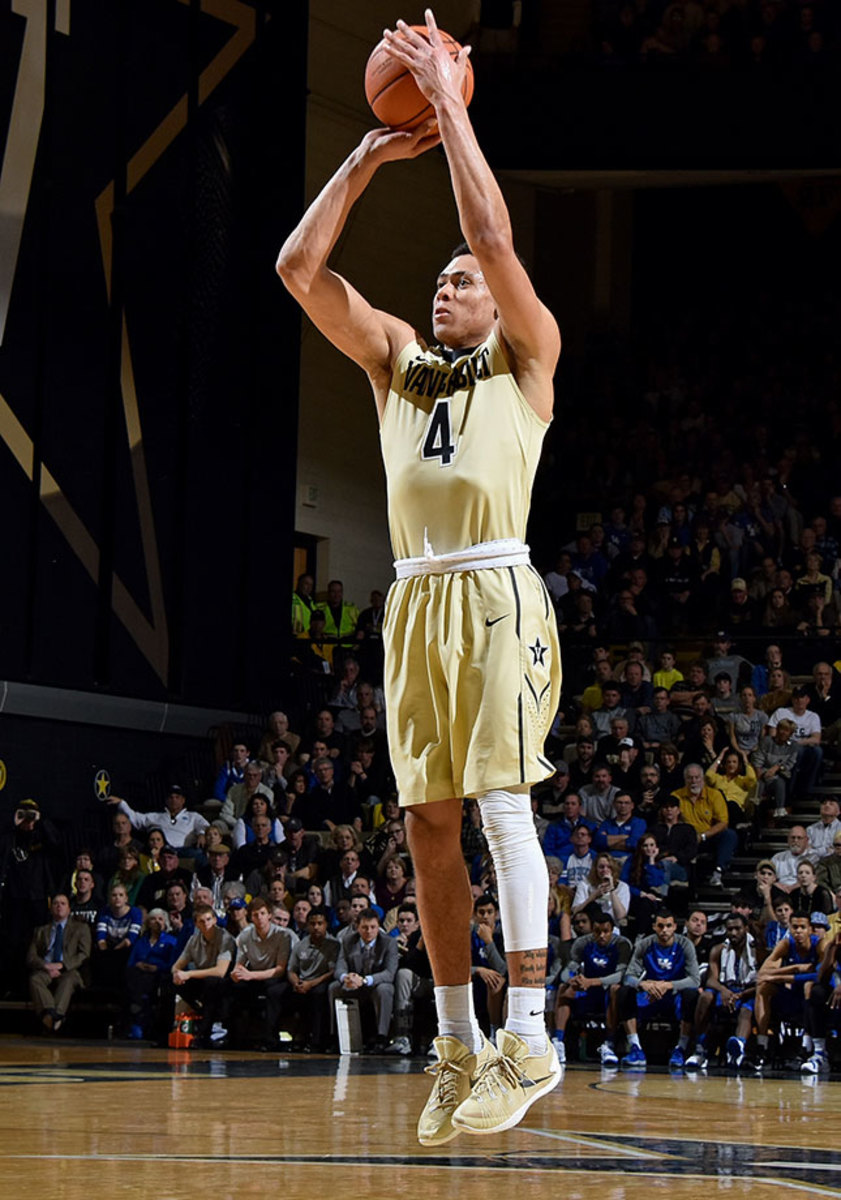
This draft pick doesn't even matter. Bulls fans are all still shell-shocked after the Derrick Rose era suddenly turned into the Jose Calderon and Robin Lopez era, and it's hard to blame them. Having said that, Wade Baldwin's defense and three-point shooting make him a perfect fit for everything the NBA values now. If Jimmy Butler's going to be handling the ball more, it makes sense to add a point guard who can defend and spot up for three while Butler creates.
15. Denver Nuggets: Furkan Korkmaz, G, Turkey (6'5", 175)
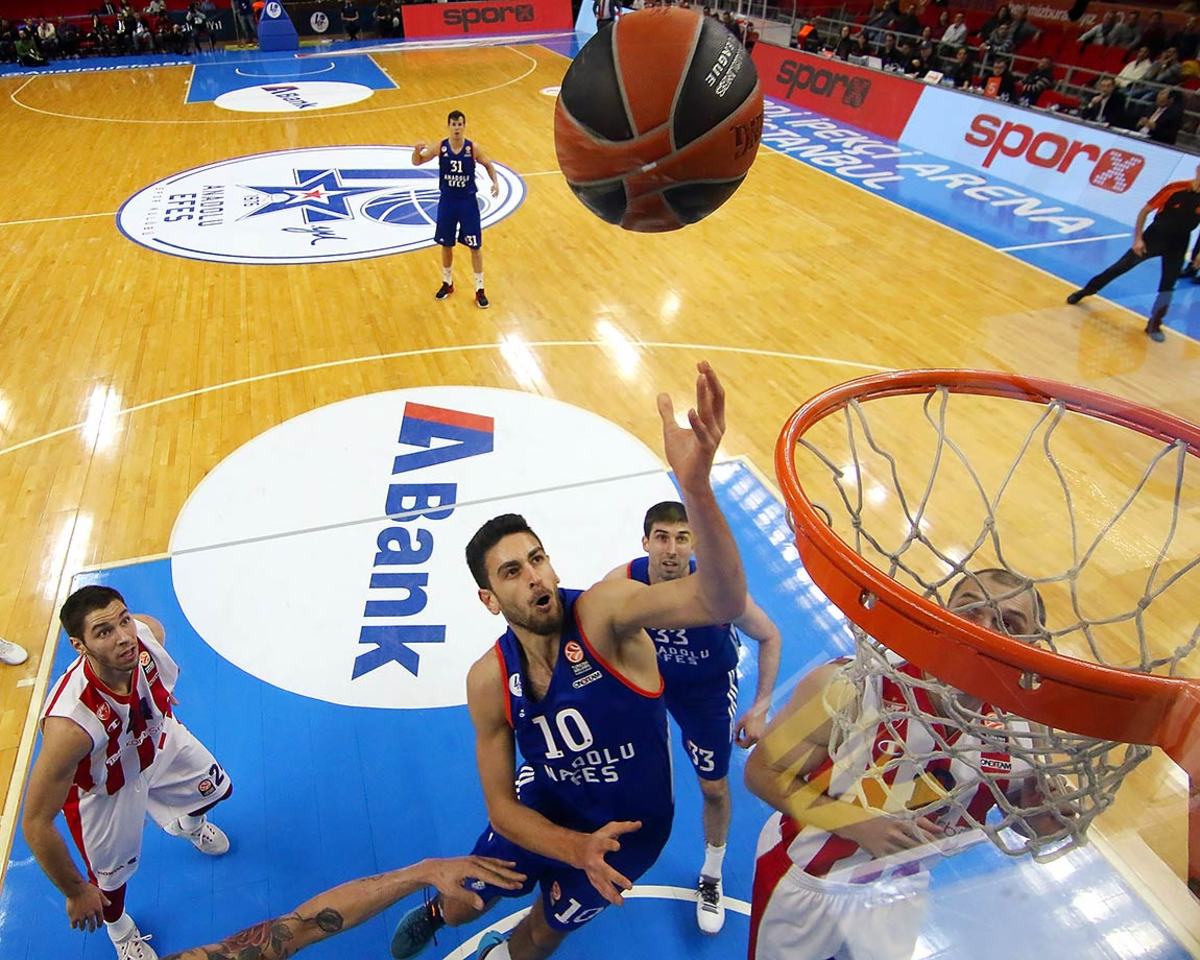
I lied when I said Brandon Ingram was my favorite player in the draft. Furkan Korkmaz is my favorite player in the draft. Wherever he lands tonight, I hope ESPN shows his full, six-minute dunk contest—dunking over that couple's romantic dinner, and then putting on the Darth Vader outfit for the finale—and gives the people what they need. He's also only 18 years old, and probably the best draft-and-stash prospect in this draft. Assuming the Nuggets won't add three rookies this season, Furkan at 15 is a smart play.
16. Boston Celtics: Taurean Prince, F, Baylor (6'7", 220)
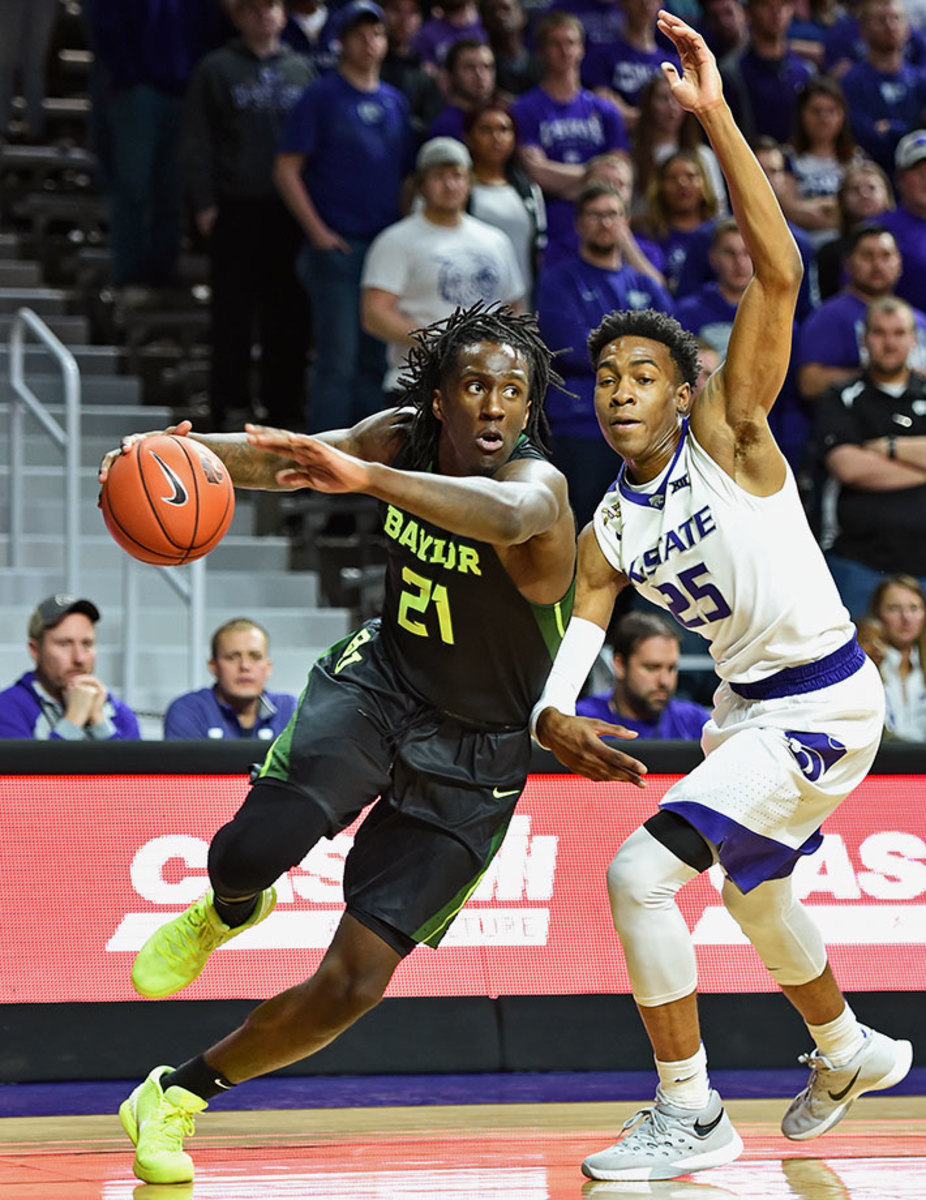
Jae Crowder gets an understudy! Prince can play either forward spot, he's built like a linebacker, he dunks like a linebacker, and his three-point shooting is solid. The Celtics don't have many glaring needs (beyond star power that this draft won't provide), and as a role player who will win over Boston fans within his first month, Prince could be great.
17. Memphis Grizzlies: Malachi Richardson, G, Syracuse (6'6", 195)
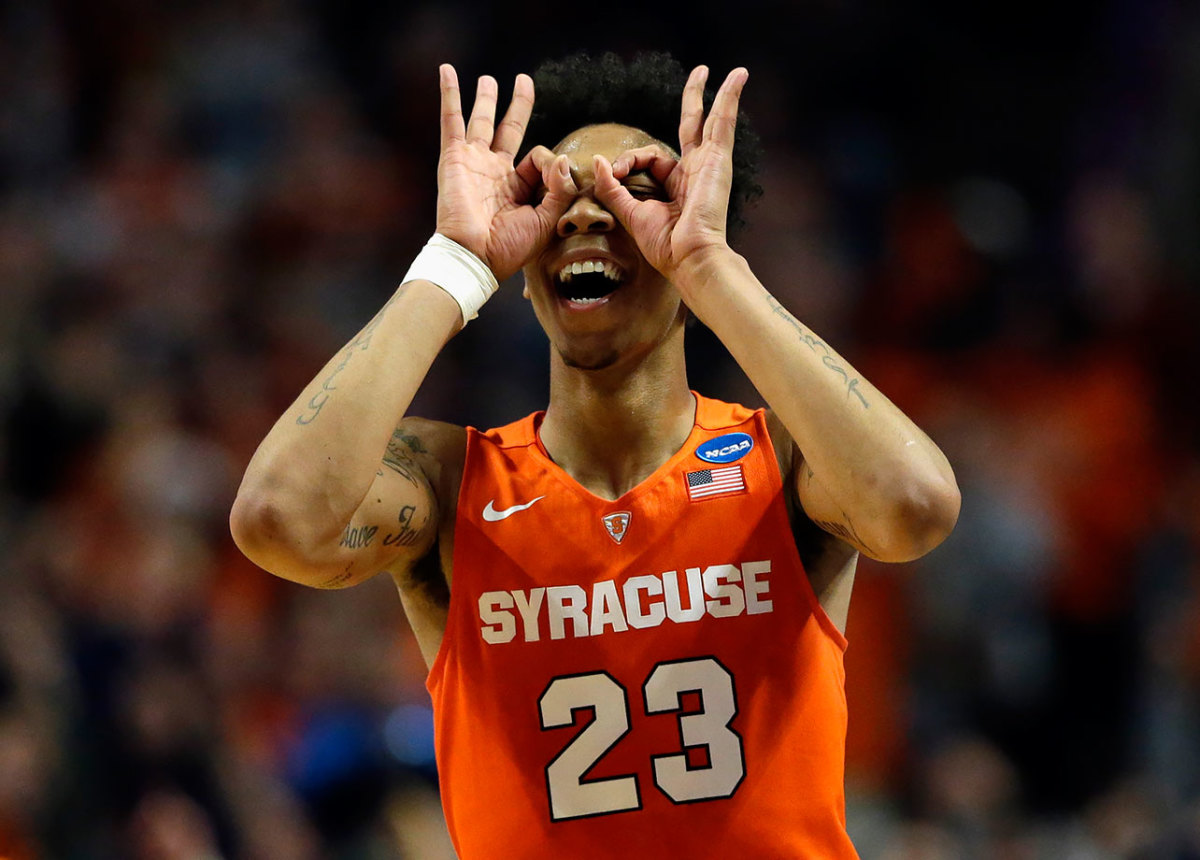
There was talk over the weekend that Memphis encouraged Richardson to shut down his workouts, because if he slides to 17, the Grizzlies plan to take him. That's a little bit puzzling considering some of the struggles he had during the regular season at Syracuse, but he's a good shooter with tools that could turn him into a starter down the road.
18. Detroit Pistons: Henry Ellenson, F/C, Marquette (6'10", 245)
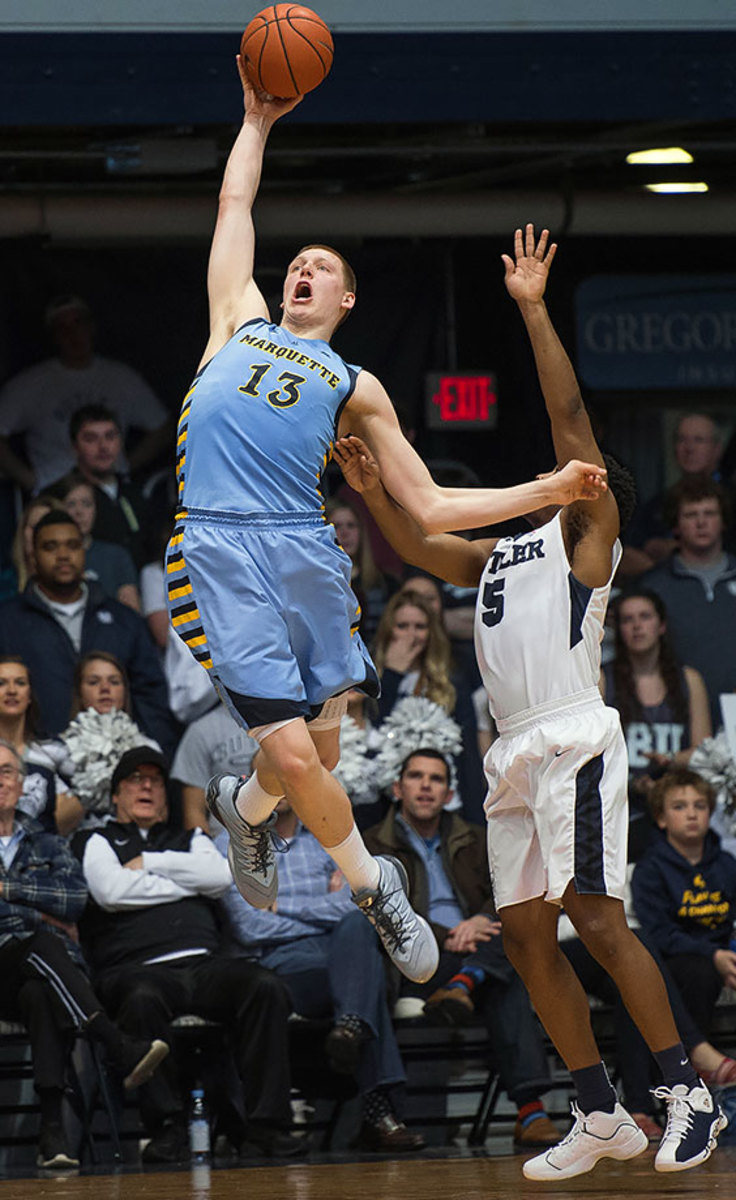
Ellenson may not fall this far on draft night—Toronto, Milwaukee, Denver, and Phoenix will all be tempted—but if he does, it's hard to imagine he slips past Detroit. He's a perfect stretch–four for Stan Van Gundy, with the potential to play next to Andre Drummond or come off the bench as a stretch–five while Drummond sits. His defense will be a work in progress, but this low in the draft, his size and skill would be a steal.
19. Denver Nuggets: Malik Beasley, G, Florida State (6'5", 190)
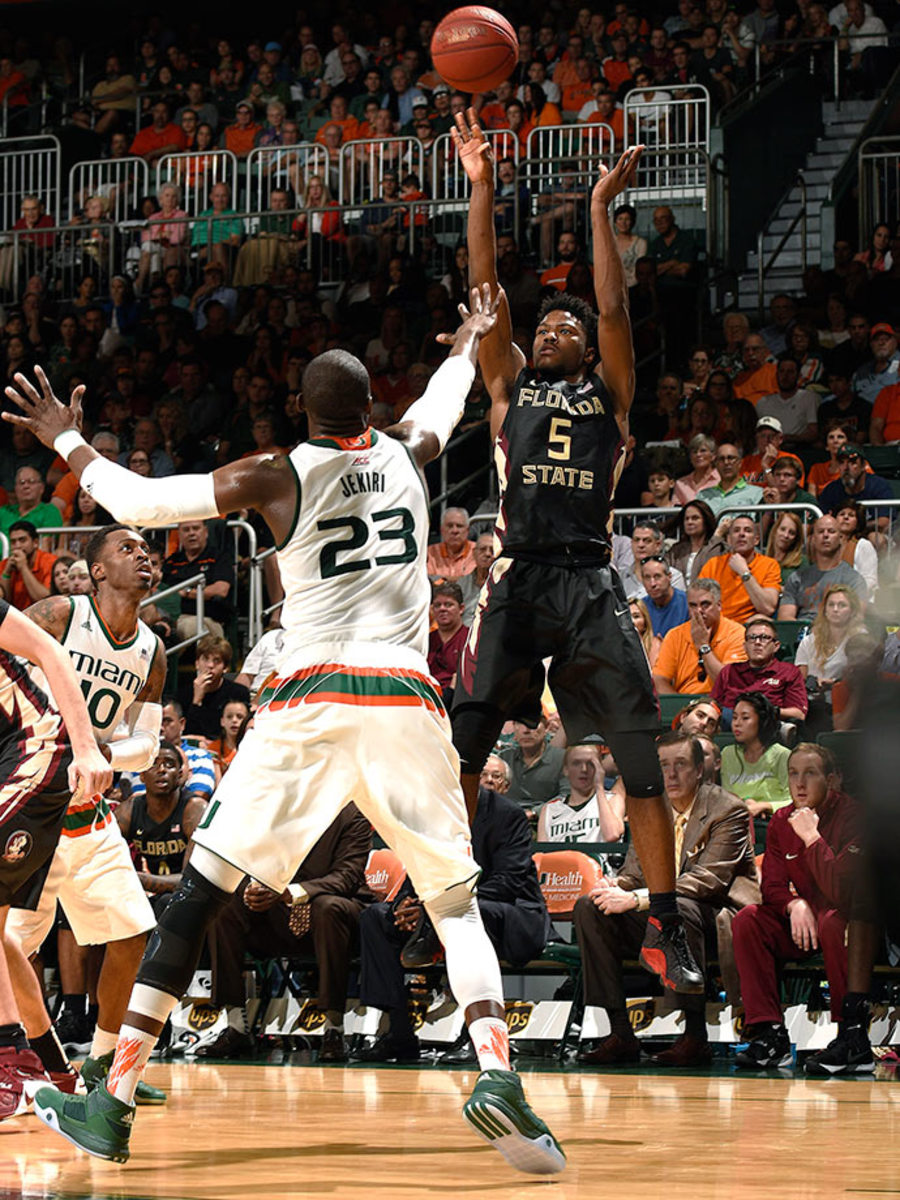
This could be a chance to steal a long-term sidekick for Emannuel Mudiay. Beasley's a little bit like Marquese Chriss. He wasn't on anyone's draft radar coming out of high school, and even now, he's something of a mystery. He can shoot, he's explosive, and while a little undersized, he's got all the tools to grow into a solid defender. Most importantly, my favorite fact of the draft is that both his parents are actors, and his dad is currently working on Bloodline, trying to get paid by Kevin, unaware that Kevin did a bad thing—I'm so in on Malik Beasley.
20. Indiana Pacers: Denzel Valentine, G/F, Michigan State (6'6", 220)
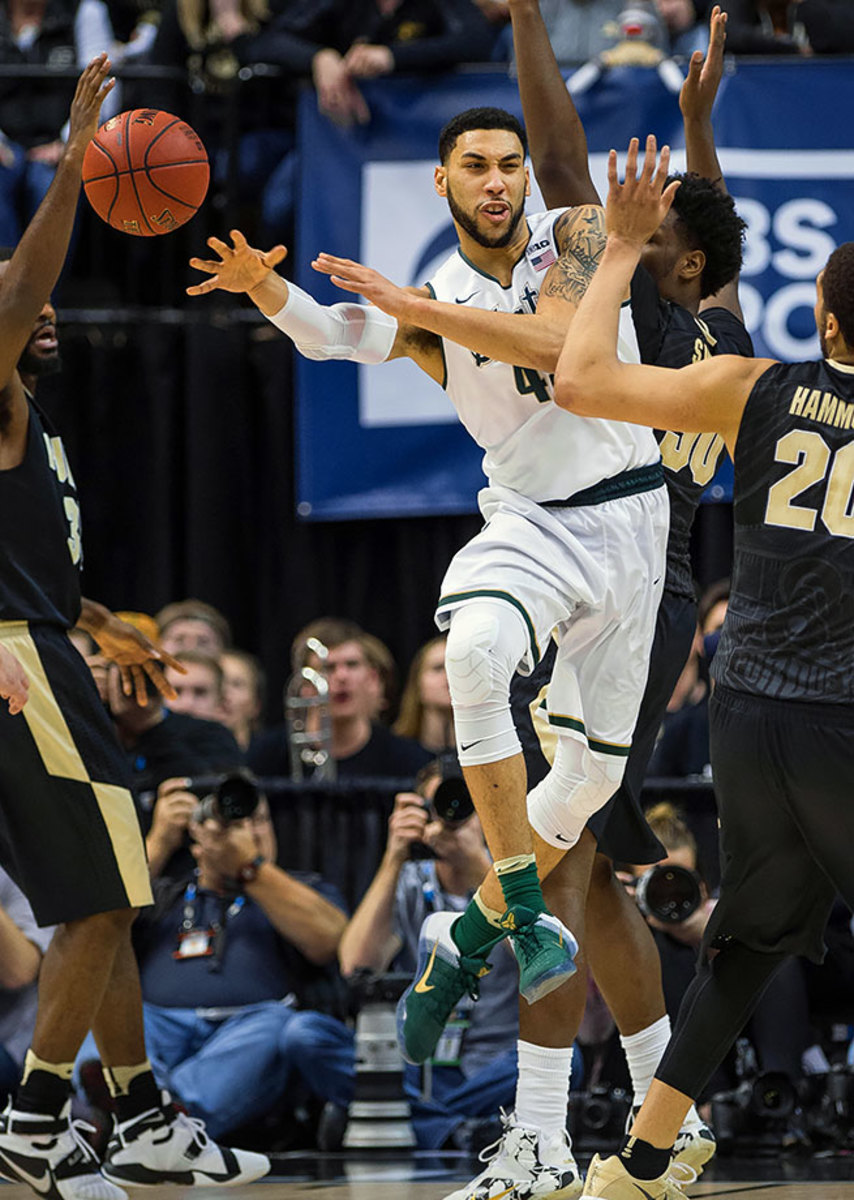
Valentine would probably be closer to a lottery pick if teams weren't scared off by injury concerns over a possibly degenerative knee. Still, his shooting and skill on offense can help anyone, he's one of the smartest players in the draft, and as a four-year senior, he'll be ready to help right away. All of it sounds like a player Larry Bird would fall in love with. Plus, the Pacers bet on Myles Turner's health last year and that worked out pretty well.
21. Atlanta Hawks: Dejounte Murray, G, Washington (6'5", 170)
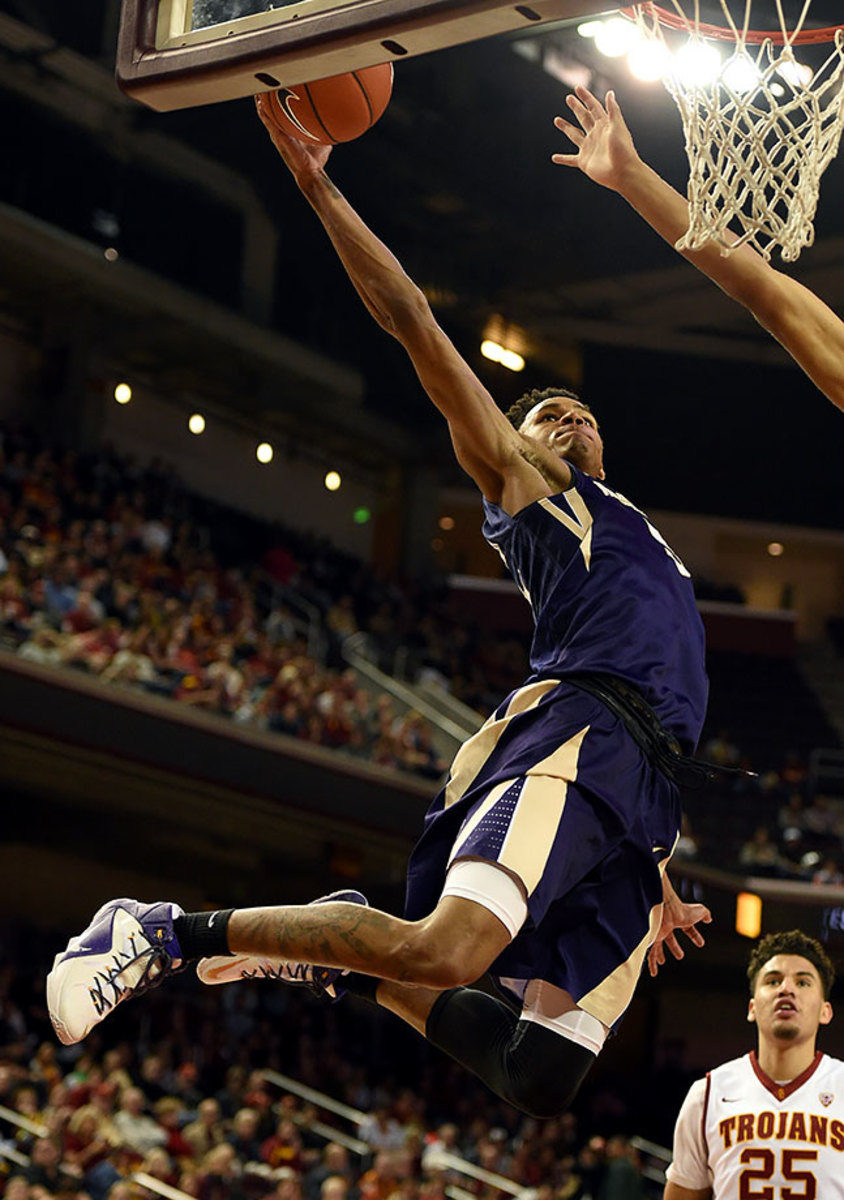
Now that Schroeder is the new Teague, maybe Atlanta needs a new Schroeder? Murray is giving off strong Tony Wroten vibes—great physical tools, can get to the rim at will, can't shoot, probably should've stayed in school—and maybe that scares some teams. It should scare some teams. But the Hawks' staff has been consistently excellent at developing young players, and Murray has more to work with than almost anyone.
22. Charlotte Hornets: Juan Hernangomez, F, Spain (6'9", 225)
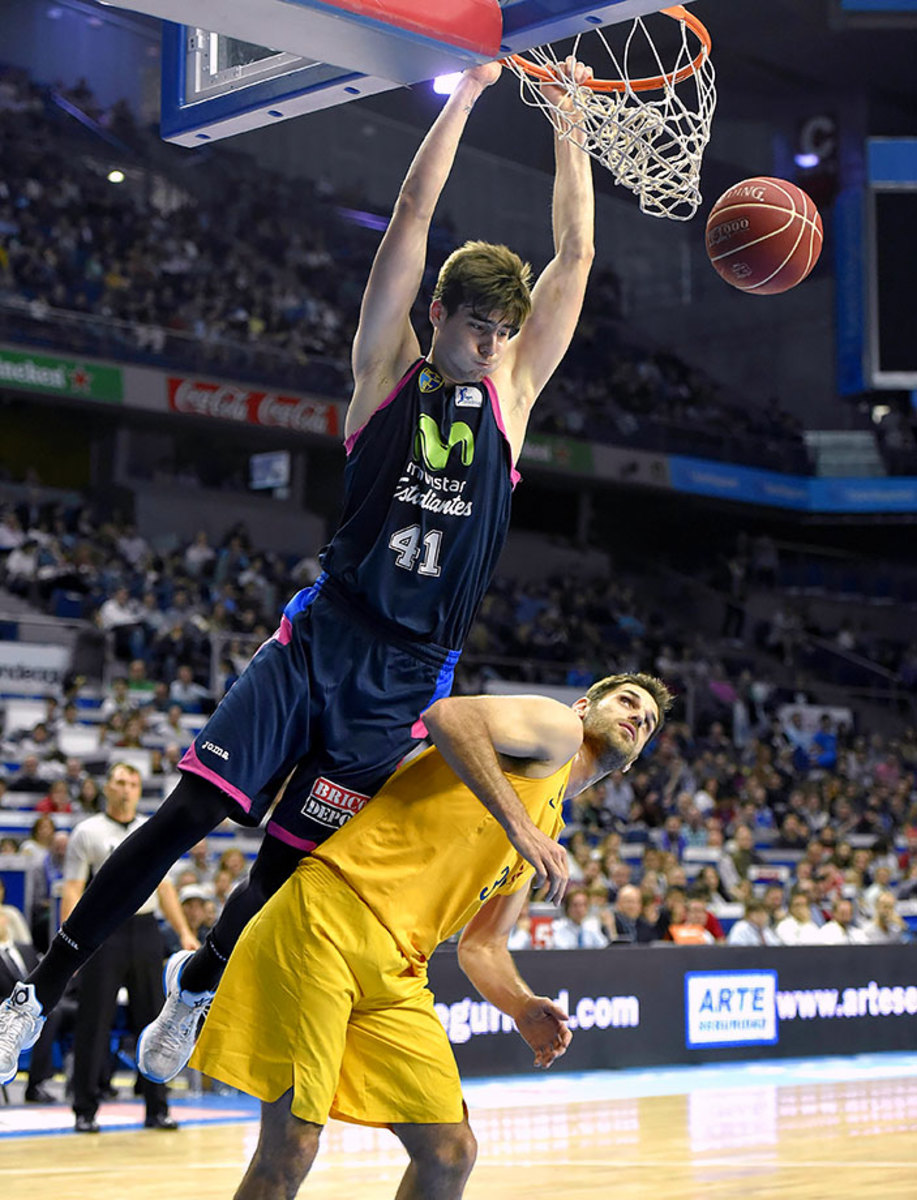
Juan "Juancho" Hernangomez is skilled and he could see time at either forward position in the NBA. His athleticism will be a question mark, but he plays incredibly hard to help compensate. Meanwhile, the Hornets may lose one or both of Nic Batum or Marvin Williams this summer. Grabbing Hernangomez could be a good insurance policy for the future.
23. Boston Celtics: Ante Zizic, C, Croatia (6'11", 240)
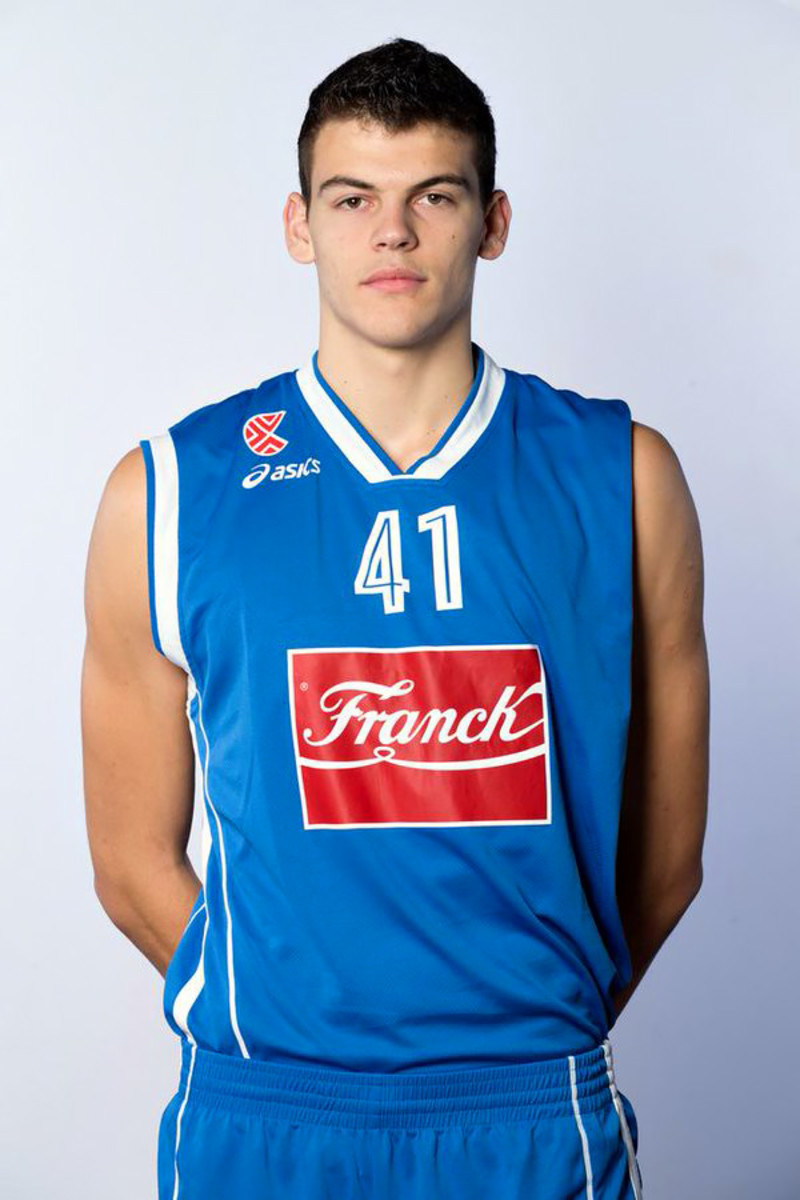
If the Celtics can't swing a trade, they'll likely look to draft–and–stash at least one of these picks. They could go with Zizic here, or Ivica Zubac, another 7–footer from the Adriatic League. Zizic is the more active and athletic of the two and figures to fit better with the direction of the league, but the Zizic-Zubac debate will (hopefully?) come down to the wire.
24. Philadelphia 76ers: Demetrius Jackson, G, Notre Dame (6'1", 220)
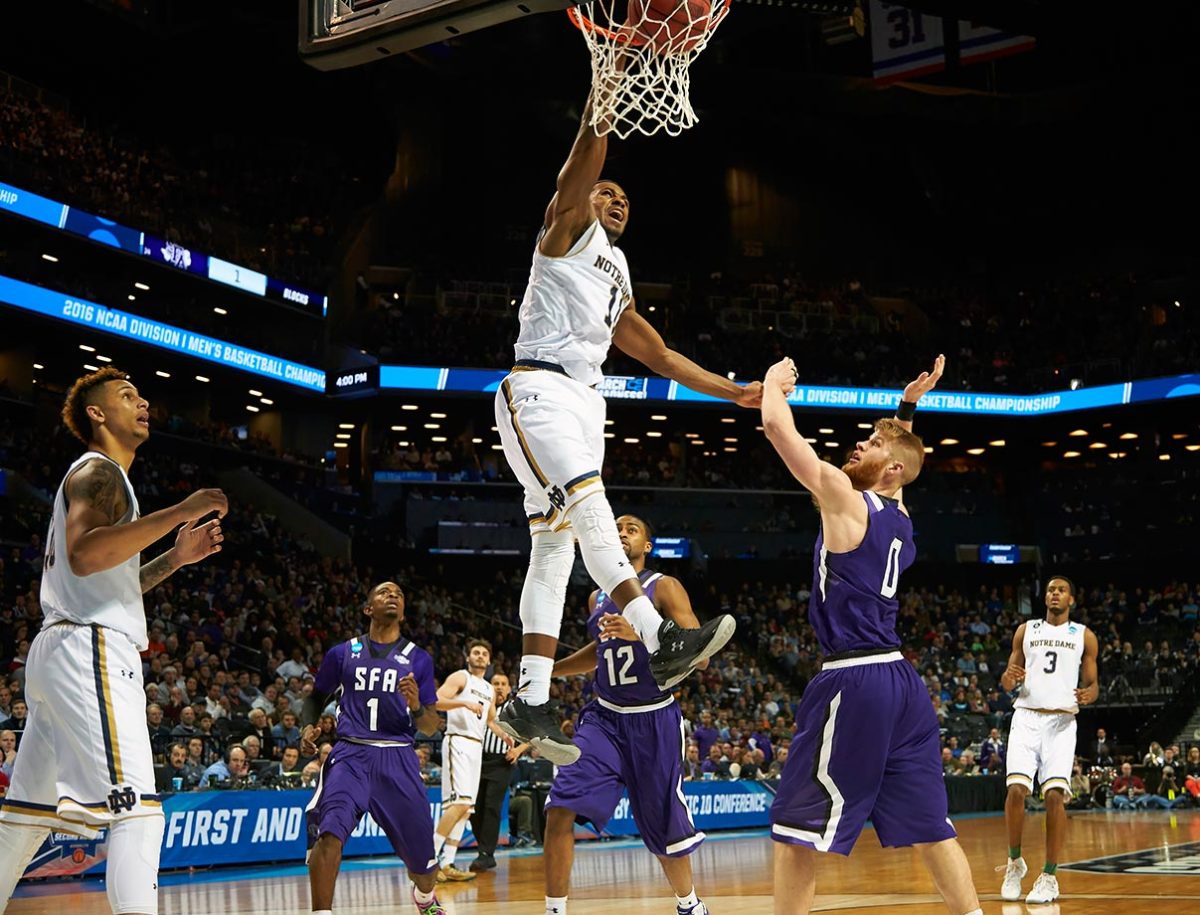
Jackson's long-term future probably makes the most sense as a high–energy third guard, but given how barren the backcourt in Philadelphia has been, he could make sense as a starter in the immediate future. Most importantly, he's got good length (6'5 wingspan) to help himself defensively, and he can hit spot-up jumpers, a prerequisite for any guard playing next to Ben Simmons.
25. Los Angeles Clippers: Cheick Diallo, F, Kansas (6'9", 218)
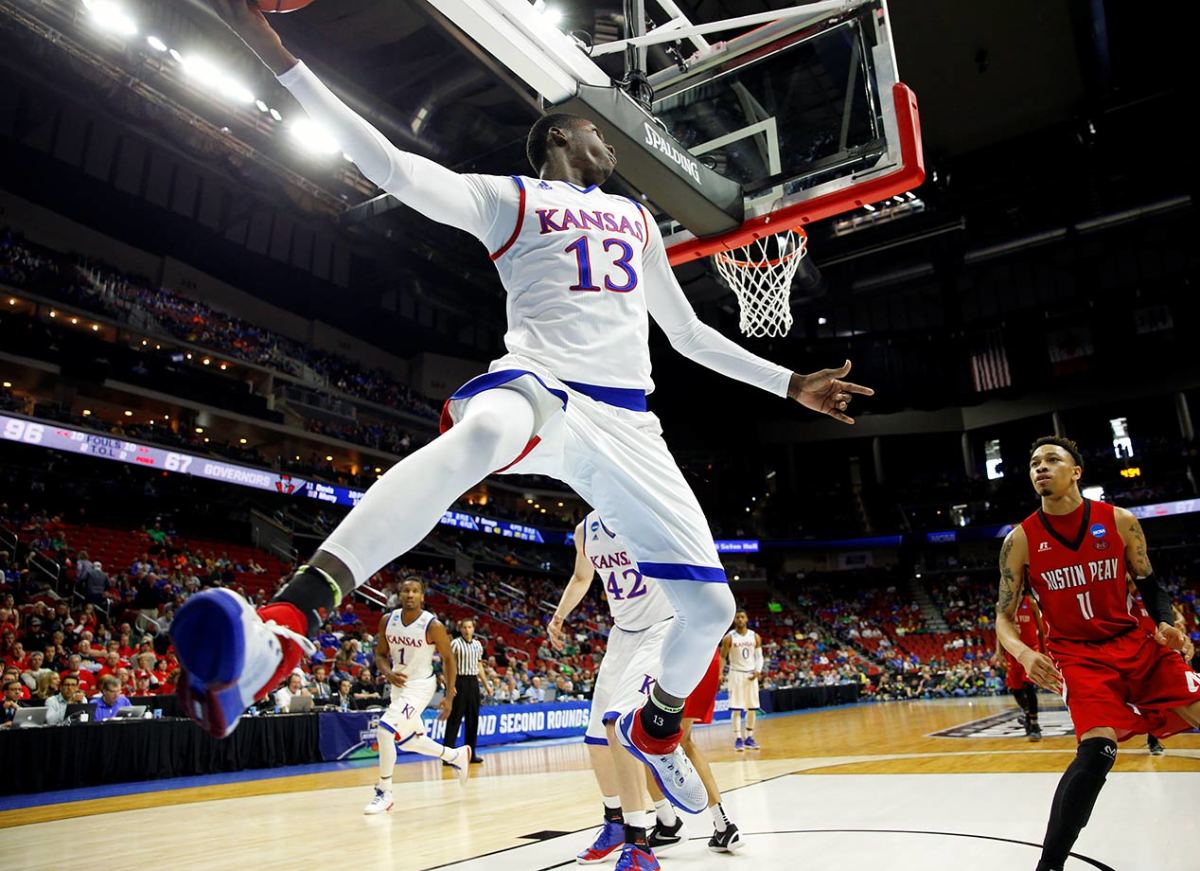
Diallo was basically invisible at Kansas this past season—3.0 ppg, 7.5 mpg—but a great combine and crazy physical tools—7'4.5" wingspan—has helped boost his stock into the first round. He has Biyombo potential off the bench, and the Clippers could draft him here and pay him roughly $70 million less over the next few years. Not a bad deal.
26. Philadelphia 76ers: Patrick McCaw, G, UNLV (6'7", 181)
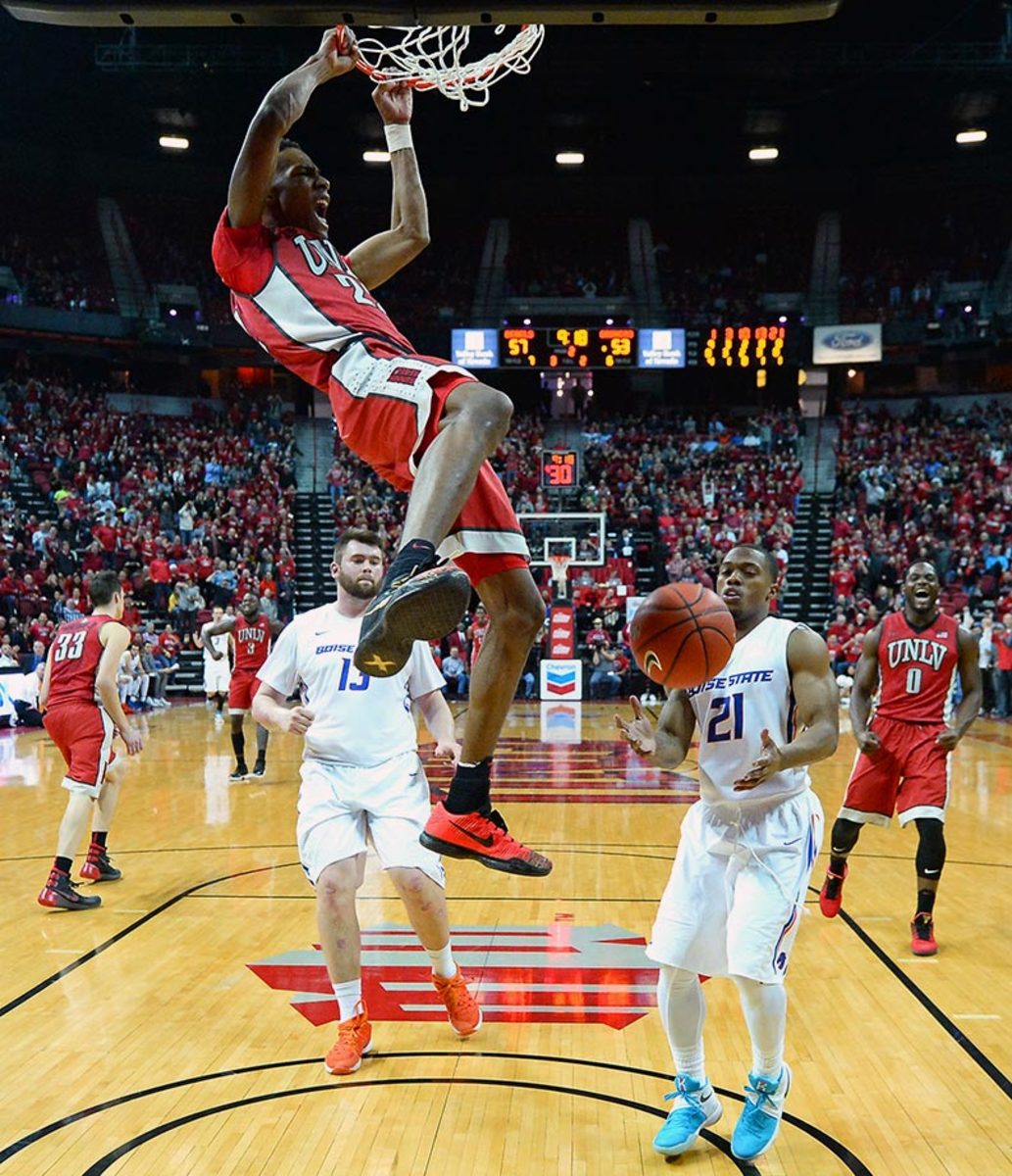
Patrick McCaw has all the tools to become an awesome two-way wing in a few years. He's long, he's big, and he shot 36% from three last year. He got lost on a crappy UNLV team that fired its coach, but if his shooting improves, and he could turn into a real steal this low in the draft. Either way, he'd be a much better project than most of the wings the Sixers have had the past few years.
27. Toronto Raptors: DeAndre Bembry, G, St. Joseph's (6'6", 220)
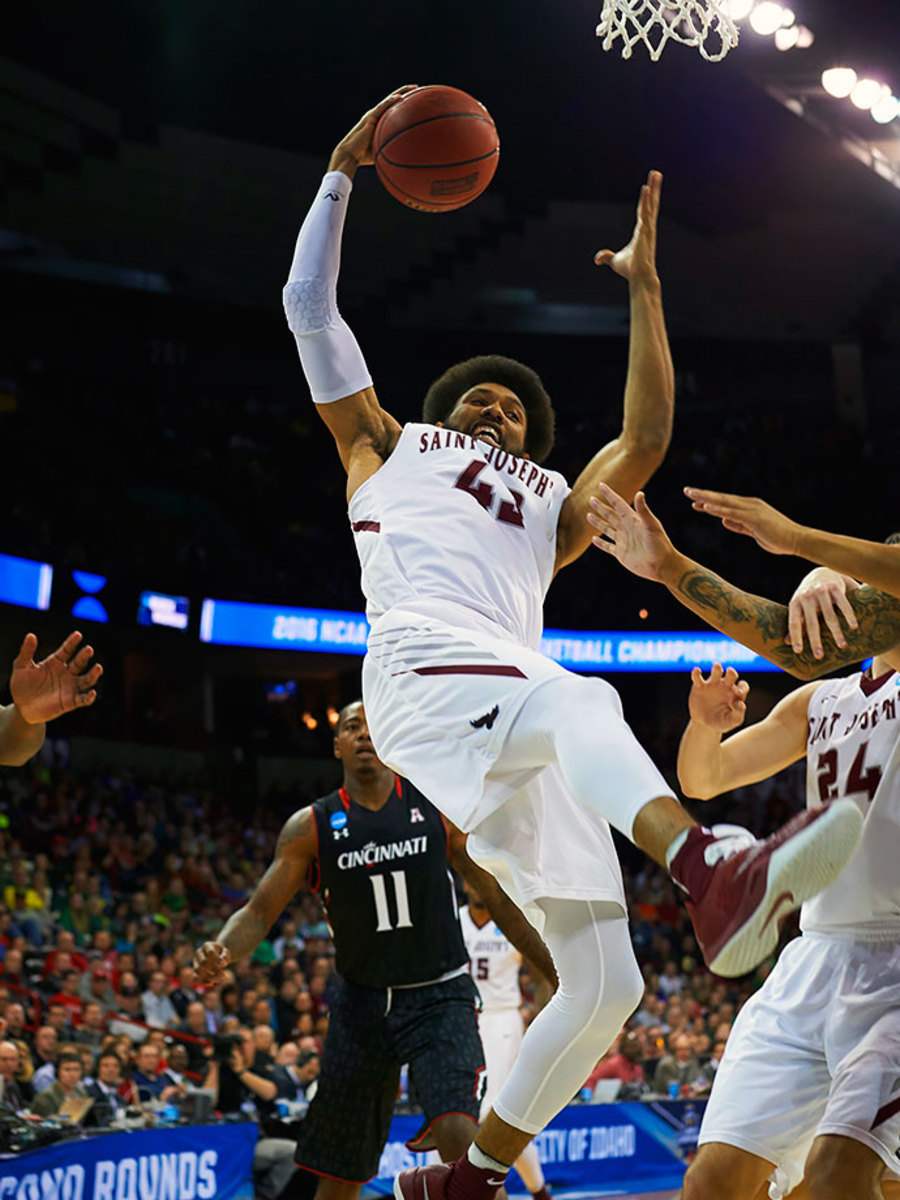
Bembry's three-point shooting is a question mark—31% for his career, 26% last season—and that's probably what will scare off Philly. But that might be the only major weakness. He's long and athletic and should be a great defender. He's got a high IQ, and had one of the most well-rounded games in college basketball (17.5 ppg, 7.8 rpg, 4.5 apg). He's the type of player who should be twice as valuable on a good team like the Raptors. Think Shaun Livingston on the wing, and not just because of the afro.
28. Phoenix Suns: Ivica Zubac, C, Croatia (7'1", 265)
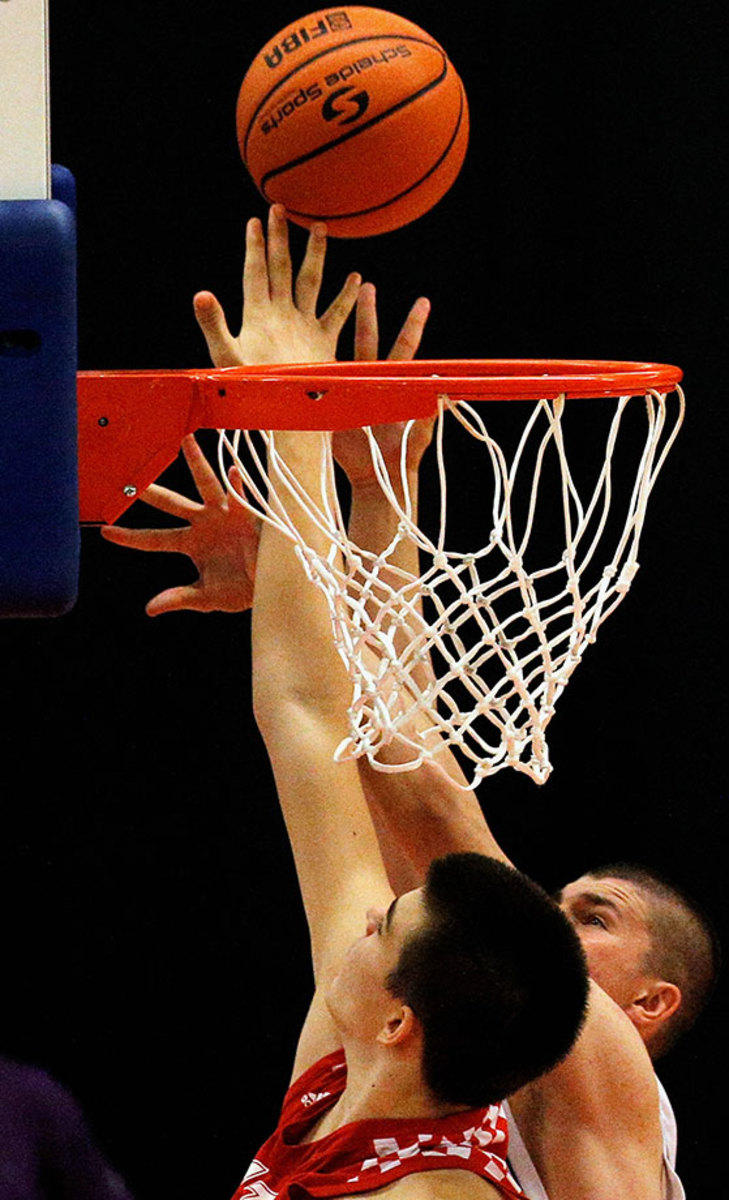
Zubac could go much higher, and at 19 years old, there's plenty of room to grow after another year or two overseas. The recent track record of the Adriatic League big men (Nikola Jokic, Jusuf Nurkic) is certainly encouraging. In any case, the Suns are unlikely to bring all three picks to the NBA next, so this would be a nice longterm investment if he's available.
29. San Antonio Spurs: Tyler Ulis, G, Kentucky (5'9", 149)
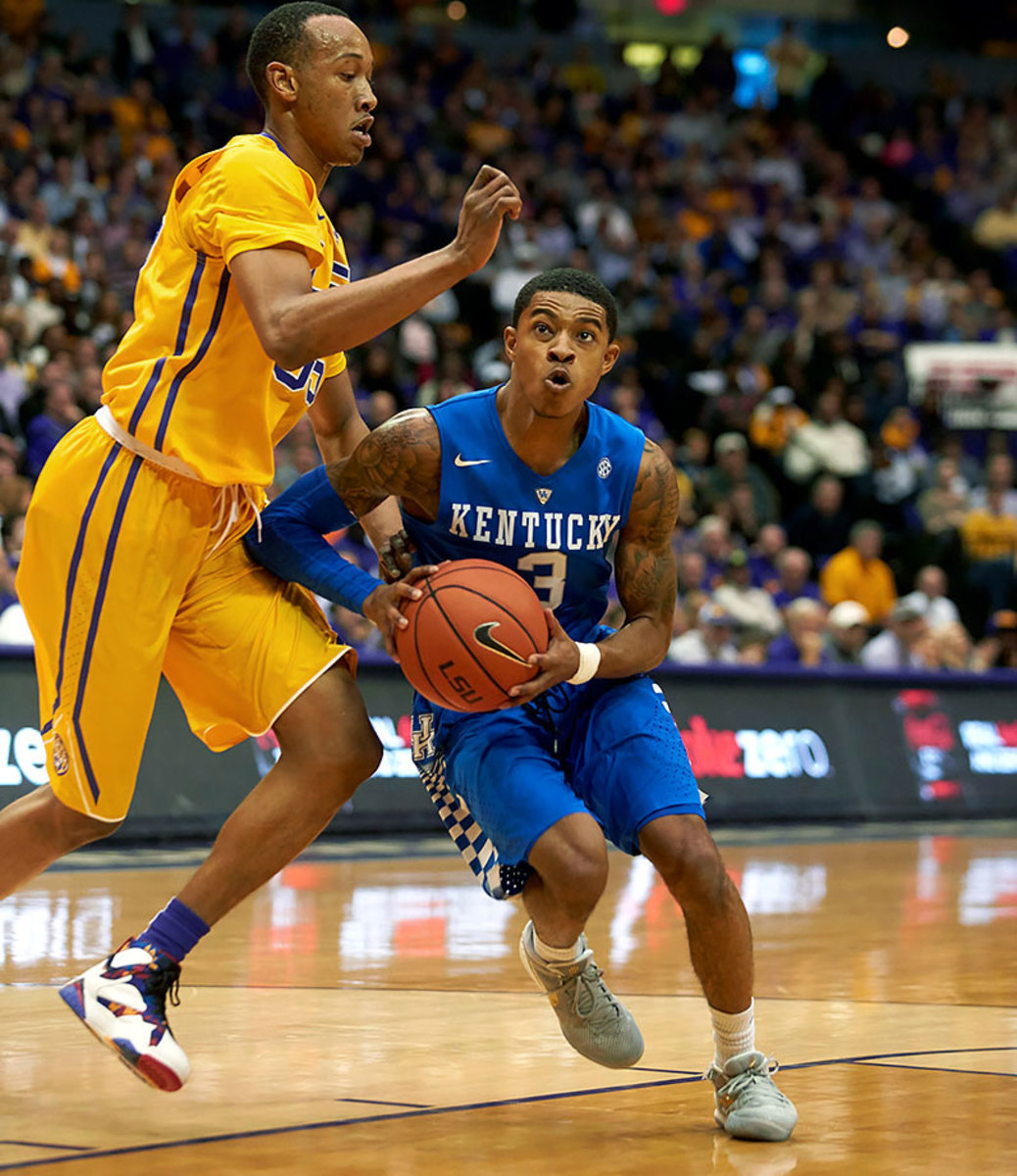
Ulis is dealing with some of the same injury concerns facing Denzel Valentine, and for a point guard who's already 150 pounds and 5'9", giving teams more room for skepticism is not ideal. But look: People around Kentucky basketball have been effusive in their Tyler Ulis praise for two years, and I will bet anything he'll be productive wherever he goes. If injury questions lead him to San Antonio and a bench mob with Kyle Anderson and Boban, this slide will be 100% worth it.
30. Golden State Warriors: Caris LeVert, G, Michigan (6'7", 205)
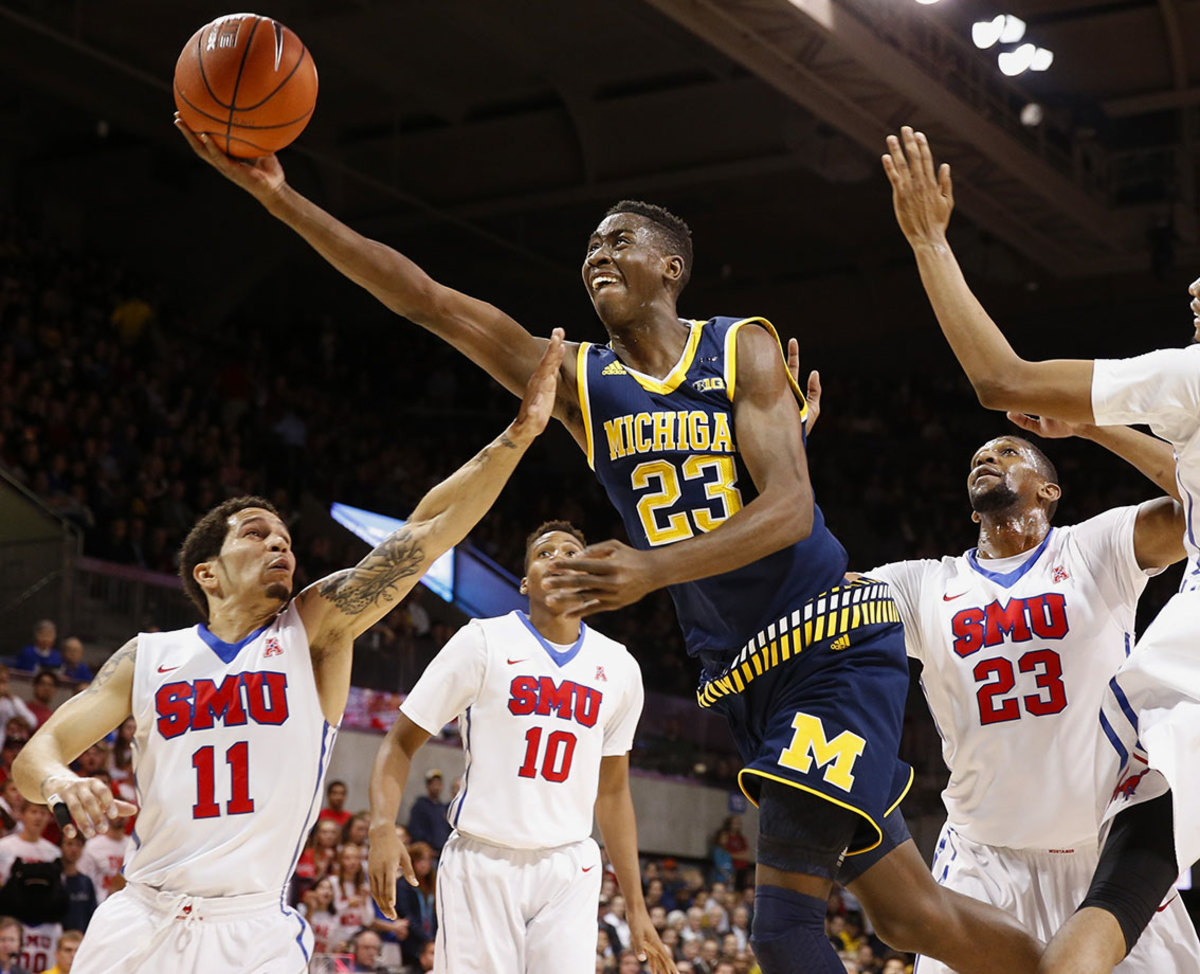
In real life, given the uncertainty surrounding both Andrew Bogut and Festus Ezeli, Damian Jones or A.J. Hammons make more sense for the Warriors. In this mock reality, all that has ever mattered—in March, April, May, and June—is setting Caris Levert free in Golden State. Don't talk to me about a Jones fracture. We're here now. The draft is in 12 hours. Can't quit before the miracle happens.
This is no outlier stance among Maccabi fans, who have soured on pretty much everything this season after failing to reach the Euroleague's final 16 for the first time in 22 years. During the opening game of the Israeli playoffs later that night, roughly 95% of the section allocated to the Ultras 96, Maccabi's die-hard fan group, is empty due to a boycott over a proposed increase in ticket prices for next season.
Among the few Ultras 96ers present is their de facto leader, Ilan Cerf, a 63-year-old who's nicknamed the Fox and has a left-shoulder tattoo that combines said animal with the Maccabi logo. His friend, Amit Shalev, translates thoughts on Bender into English. "The Fox says that Bender has good virtue," says Shalev, explaining that he takes time to thank fans, even after a blowout loss to a rival. "But he is not a good player in this league. The Fox asks why is the NBA interested in Bender now? What does a scout see that we the fans cannot see?"
They're told that the NBA loves big men who can shoot and act as secondary playmakers. The Ultras peer down at Bender, who's seated behind the bench in a blue, long-sleeve Maccabi zip-up, was left inactive during the playoffs in favor of forwards in their late 20s and early 30s.
"O.K.," says Shalev. "But right now, it looks like imagination."
***
Dragan Bender is sitting on the couch in the living room of his apartment, which seems more like a real adult's place than an 18-year-old's—it's on the second floor of a high-rise in a tony neighborhood, it's clean, there are snacks in little dishes on the coffee table, there's a stack of English-language books on a side table that he's actually read (Twelve Years a Slave) or plans to read (The Art of Fielding)—and he's explaining why he prefers decades-old Croatian music. "Back in the day, I think songs were really meaningful," he says. "Today is just, Sell the song and make some money. Decades ago it was about some of the things that happen in your life and some of the things that bother you.... I just love the songs about some situation in life and how to resolve those situations."
He only has a few games left in a season that has been humbling. He is heading to the NBA, and he is not necessarily ready. It is equally fortunate and unfortunate that NBA fans have no trouble imagining a wiry Euro 7-footer taking the league by storm, because 7'3" Kristaps Porzingis of Latvia became the most buzzworthy athlete in New York this season as a 20-year-old rookie. Bender is, in the eyes of multiple NBA scouts, more advanced than Porzingis at the same age, but the fact that Bender will debut at 18 will limit his immediate impact. And casting him as a Porzingis clone is a mistake. Porzingis is a pure-shooting, hip-hop-loving giant, while Bender is a playmaking cog whose primary hoops influence is even older than his music: Croatian legend Toni Kukoc.
• Scouting Buddy Hield, the best shooter in this year's NBA draft
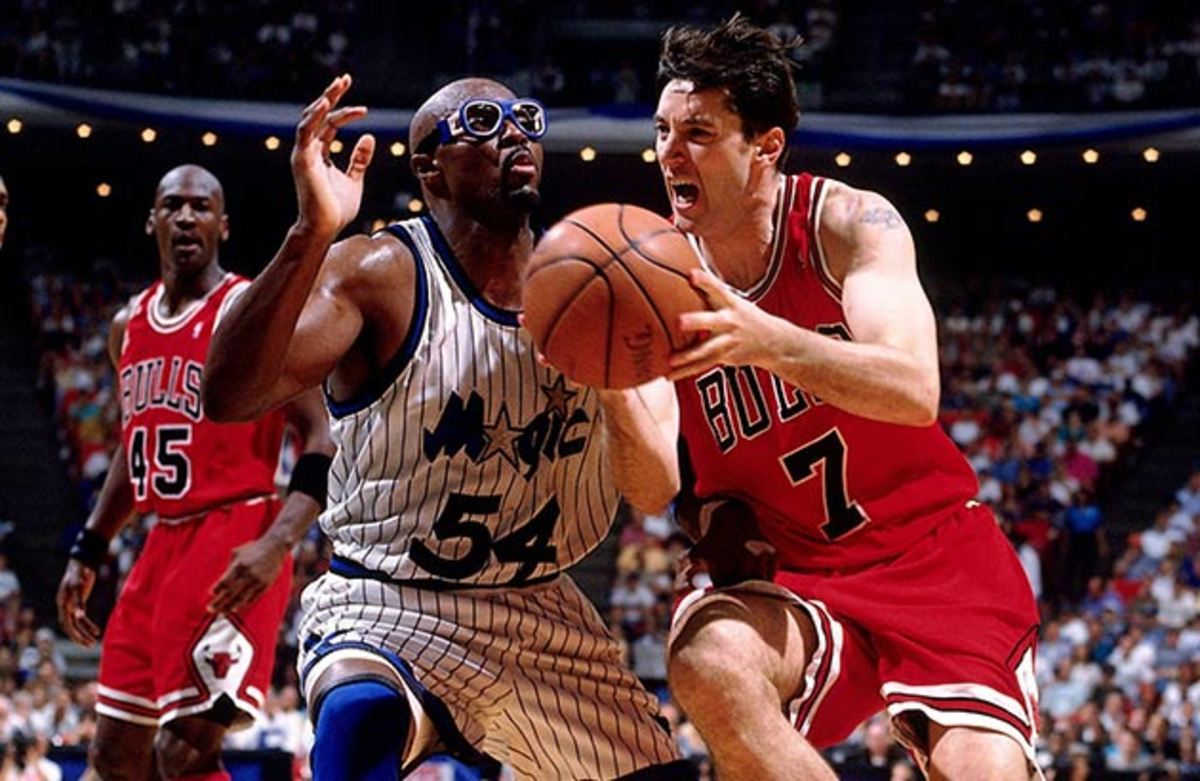
"I modeled my game after him," Bender says of the 6'10" lefty who debuted in the NBA with the Bulls in 1993, four years before Bender was born. A young Bender found VHS tapes of Kukoc at the Vujčić academy lodgings, and as Bender studied them, it made more sense why his youth coaches were challenging him to function as an oversized point guard. He was captivated by the style of Kukoc, a positionless creator who valued passing over scoring. Bender wore Kukoc's number 7 as recently as the 2014–15 season, when he was on loan to Ramat Gan.
Bender cannot, however, mimic the career time line of Kukoc, who had eight seasons of European stardom and two Olympic silver medals behind him when he arrived in the NBA, not to mention multiple nicknames: the Spider of Split, Pink Panther, Croatian Sensation. He was a 25-year-old rookie, ready to be tasted.
"Now is a different time for a young guy," Bender says, explaining that an NBA team might be a more preferable development situation for a teenager than an impatient Euroleague club. The sound of Dragan Bender is so exotic and menacing that he may have no need for nicknames in the U.S., but the one he's had since his Split days is Roda. It's Croatian for stork, a soaring, gliding bird that in this case—draft stock peaking, age be damned—has no better choice than to ride the westward currents.
